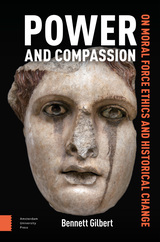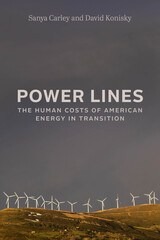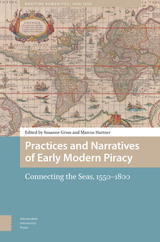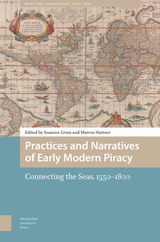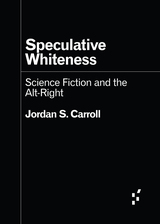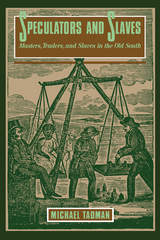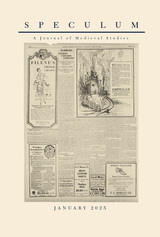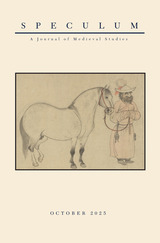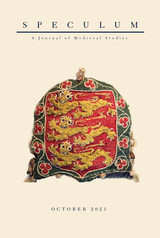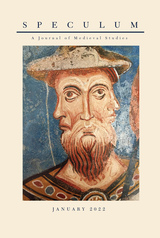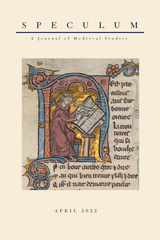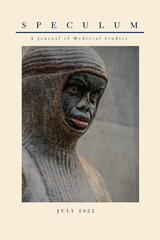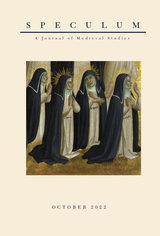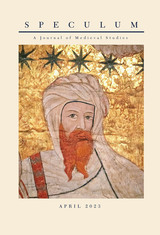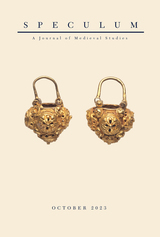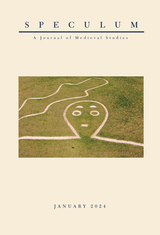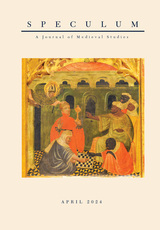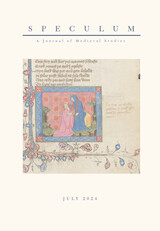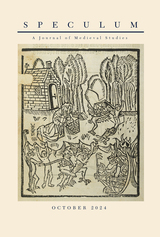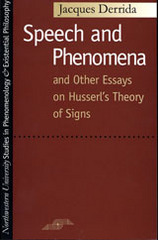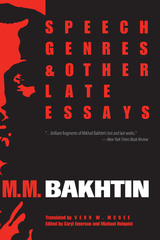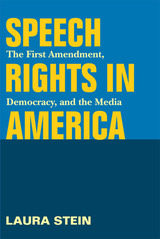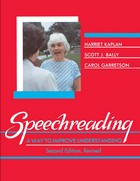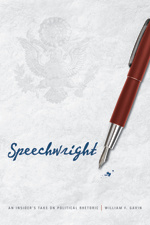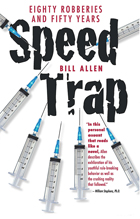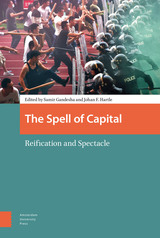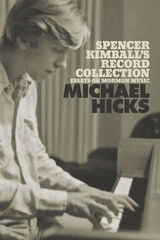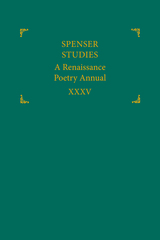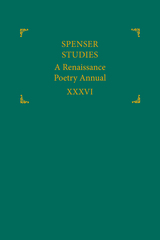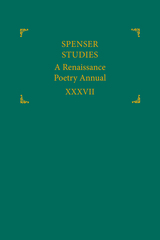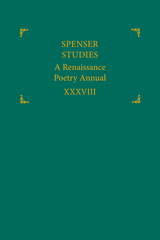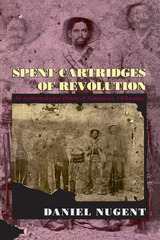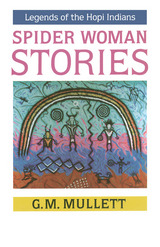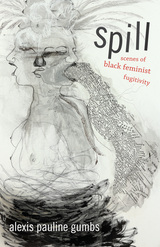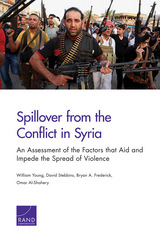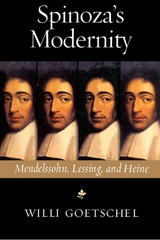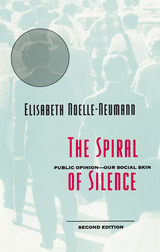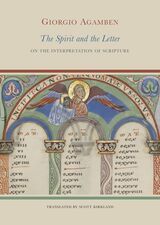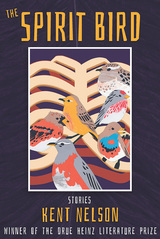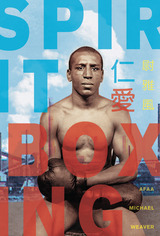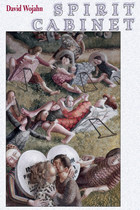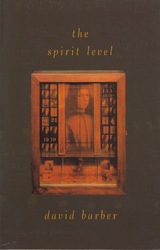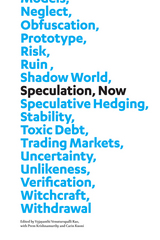 Speculation, Now: Essays and Artwork
Vyjayanthi Venuturupalli Rao, with Prem Krishnamurty and Carin Kuoni, eds.
Duke University Press, 2014 Interdisciplinary in design and concept, Speculation, Now illuminates unexpected convergences between images, concepts, and language. Artwork is interspersed among essays that approach speculation and progressive change from surprising perspectives. A radical cartographer asks whether "the speculative" can be represented on a map. An ethnographer investigates religious possession in Islam to contemplate states between the divine and the seemingly human. A financial technologist queries understandings of speculation in financial markets. A multimedia artist and activist considers the relation between social change and assumptions about the conditions to be changed, and an architect posits purposeful neglect as political strategy. The book includes an extensive glossary with more than twenty short entries in which scholars contemplate such speculation-related notions as insurance, hallucination, prophecy, the paradox of beginnings, and states of half-knowledge. The book's artful, nonlinear design mirrors and reinforces the notion of contingency that animates it. By embracing speculation substantively, stylistically, seriously, and playfully, Speculation, Now reveals its subversive and critical potential.
Artists and essayists include William Darity Jr., Filip De Boeck, Boris Groys, Hans Haacke, Darrick Hamilton, Laura Kurgan, Lin + Lam, Gary Lincoff, Lize Mogel, Christina Moon, Stefania Pandolfo, Satya Pemmaraju, Mary Poovey, Walid Raad, Sherene Schostak, Robert Sember, and Srdjan Jovanović Weiss.
Published by Duke University Press and the Vera List Center for Art and Politics at The New School
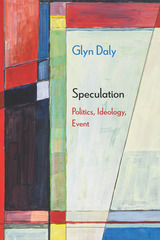 Speculation: Politics, Ideology, Event
Glyn Daly
Northwestern University Press, 2019 Speculation: Politics, Ideology, Event develops Hegel’s radical perspective of speculative thought as a way of reclaiming and revitalizing the sense of the future and its possibilities. Engaging with such figures as Alain Badiou, Quentin Meillassoux, Ernesto Laclau, Slavoj Žižek, and Fredric Jameson, Glyn Daly articulates the distinctness of speculative philosophy and draws its implications for new debates in areas of science, politics, capitalism, ideology, ethics, and the event. In a confrontation with today’s fatalistic milieu, principal emphasis is given to Hegel’s idea of infinity as the intrinsic dimension of negativity within all finitude. Against the modern era’s paradigmatic tendency to externalize social problems in the form of antagonism and Otherness, Daly argues for a renewal of utopian thought based on Hegelian reconciliation and the affirmation of excess as the essence of all being. On these grounds, he advances a new kind of political imagination that in speculative terms centers on uncompromising notions of truth and reason.
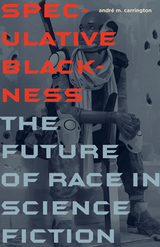 Speculative Blackness: The Future of Race in Science Fiction
André M. Carrington
University of Minnesota Press, 2016 In Speculative Blackness, André M. Carrington analyzes the highly racialized genre of speculative fiction—including science fiction, fantasy, and utopian works, along with their fan cultures—to illustrate the relationship between genre conventions in media and the meanings ascribed to blackness in the popular imagination. Carrington’s argument about authorship, fandom, and race in a genre that has been both marginalized and celebrated offers a black perspective on iconic works of science fiction. He examines the career of actor Nichelle Nichols, who portrayed the character Uhura in the original Star Trek television series and later became a recruiter for NASA, and the spin-off series Star Trek: Deep Space Nine, set on a space station commanded by a black captain. He recovers a pivotal but overlooked moment in 1950s science fiction fandom in which readers and writers of fanzines confronted issues of race by dealing with a fictitious black fan writer and questioning the relevance of race to his ostensible contributions to the 'zines. Carrington mines the productions of Marvel comics and the black-owned comics publisher Milestone Media, particularly the representations of black sexuality in its flagship title, Icon. He also interrogates online fan fiction about black British women in Buffy the Vampire Slayer and the Harry Potter series.
Throughout this nuanced analysis, Carrington theorizes the relationship between race and genre in cultural production, revealing new understandings of the significance of blackness in twentieth-century American literature and culture.
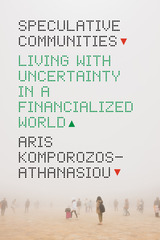 Speculative Communities: Living with Uncertainty in a Financialized World
Aris Komporozos-Athanasiou
University of Chicago Press, 2022 Speculative Communities investigates the financial world’s influence on the social imagination, unraveling its radical effects on our personal and political lives.
In Speculative Communities, Aris Komporozos-Athanasiou examines the ways that speculation has moved beyond financial markets to shape fundamental aspects of our social and political lives. As ordinary people make exceptional decisions, such as the American election of a populist demagogue or the British vote to leave the European Union, they are moving from time-honored and -tested practices of governance, toward the speculative promise of a new, more uncertain future. This book shows how even our methods of building community have shifted to the speculative realm as social media platforms enable and amplify our volatile wagers.
For Komporozos-Athanasiou, “to speculate” means increasingly “to connect,” to endorse the unknown pre-emptively, and often daringly, as a means of social survival. Grappling with the question of how more uncertainty can lead to its full-throated embrace rather than dissent, Speculative Communities shows how finance has become the model for society writ large. As Komporozos-Athanasiou argues, virtual marketplaces, new social media, and dating apps bring finance’s opaque infrastructures into the most intimate realms of our lives, leading to a new type of speculative imagination across economy, culture, and society.
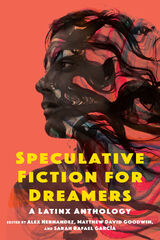 Speculative Fiction for Dreamers: A Latinx Anthology
Edited by Alex Hernandez, Matthew David Goodwin, and Sarah Rafael García with a Preface by Frederick Luis Aldama
Ohio State University Press, 2021 “An outstanding showcase of contemporary Latinx authors exploring identity through the conventions of sci-fi, fantasy, and magical realism. Themes of family, migration, and community resonate throughout these 38 masterful stories. … This is a knockout.” —Publishers Weekly (starred review)
Finalist, 2022 World Fantasy Awards
Finalist, 2022 Ignyte Awards
Finalist, 2022 Utopia Awards
In a tantalizing array of new works from some of the most exciting Latinx creators working in the speculative vein today, Speculative Fiction for Dreamers extends the project begun with a previous anthology, Latinx Rising (The Ohio State University Press, 2020), to showcase a new generation of writers. Spanning diverse forms, settings, perspectives, and styles, but unified by their drive to imagine new Latinx futures, these stories address the breadth of contemporary Latinx experiences and identities while exuberantly embracing the genre’s ability to entertain and surprise. With new work for new audiences in their teens and up, and especially for Latinx people navigating their identities in the ever-shifting, sometimes perilous, but always promising cultural landscape of the US, this book is for dreamers—and DREAMers—everywhere.
Contributors: Grisel Y. Acosta, Stephanie Adams-Santos, Frederick Luis Aldama, William Alexander, Nicholas Belardes, Louangie Bou-Montes, Lisa M. Bradley, Eliana Buenrostro, Diana Burbano, Pedro Cabiya, Steve Castro, Fernando de Peña, Scott Russell Duncan, Samy Figaredo, Tammy Melody Gomez, J. M. Guzman, Ernest Hogan, Pedro Iniguez, Ezzy G. Languzzi, Patrick Lugo, Roxanne Ocasio, Daniel Parada, Stephanie Nina Pitsirilos, Reyes Ramirez, Julia Rios, Sara Daniele Rivera, Roman Sanchez, Tabitha Sin, Alex Temblador, Rodrigo Vargas, Laura Villareal, Sabrina Vourvoulias, Karlo Yeager Rodriguez
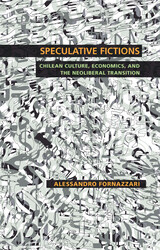 Speculative Fictions: Chilean Culture, Economics, and the Neoliberal Transition
Alessandro Fornazzari
University of Pittsburgh Press, 2013 Speculative Fictions views the Chilean neoliberal transition as reflected in cultural production from the postdictatorship era of the 1970s to the present. To Alessandro Fornazzari, the move to market capitalism effectively blurred the lines between economics and aesthetics, perhaps nowhere more evidently than in Chile.
Through exemplary works of film, literature, the visual arts, testimonials, and cultural theory, Fornazzari reveals the influence of economics over nearly every aspect of culture and society. Citing Karl Marx, Michel Foucault, Walter Benjamin, Willy Thayer, Milton Friedman, and others, Fornazzari forms the theoretical basis for his neoliberal transitional discourse as a logical progression of capitalism.
Fornazzari identifies Casa de campo, José Donoso’s allegory of the military coup of 1973 and the ensuing monetary crisis, as a harbinger of transitional texts, challenging them to explore new forms of abstraction. Those forms are explored in the novels Oir su voz by Arturo Fontaine and Mano de obra by Diamela Eltit, where Fornazzari examines divergent views of workers in the form of neoliberal human capital or post-Fordist immaterial labor. In documentaries by Patricio Guzmán and Silvio Caiozzi, he juxtaposes depictions of mass mobilization and protest to the mass marketing of individual memory and loss, claiming they serve as symbols of the polarities of dictatorship and neoliberalism. Fornazzari then relates the subsuming of the individual under both fascism and neoliberalism by recalling the iconic imbunche (a mutilated figure whose orifices have been sewn closed) in works by Donoso and the visual artist Catalina Parra. He continues the theme of subsumption in his discussion of the obliteration of the divide between physical labor and intellectualism under neoliberalism, as evidenced in the detective novel A la sombra del dinero by Ramón Díaz Eterovic.
In these examples and others, Fornazzari presents a firmly grounded theoretical analysis that will appeal to Latin Americanists in general and to those interested in the intersection of economics and culture. The Chilean experience provides a case study that will also inform students and scholars of neoliberal transitions globally.
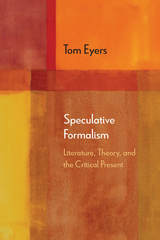 Speculative Formalism: Literature, Theory, and the Critical Present
Tom Eyers
Northwestern University Press, 2017 Speculative Formalism engages decisively in recent debates in the literary humanities around form and formalism, making the case for a new, nonmimetic and antihistoricist theory of literary reference. Where formalism has often been accused of sealing texts within themselves, Eyers demonstrates instead how a renewed, speculative formalism can illuminate the particular ways in which literature actively opens onto history, politics, and nature, in a connective movement that puts formal impasses to creative use.
Through a combination of philosophical reflection and close rhetorical readings, Eyers explores the possibilities and limits of deconstructive approaches to the literary, the impact of the “digital humanities” on theory, and the prospects for a formalist approach to “world literature.” The book includes sustained close readings of Baudelaire, Mallarmé, Yeats, and Wallace Stevens, as well as Alain Badiou, Paul de Man, and Fredric Jameson.
 Speculative Light: The Arts of Beauford Delaney and James Baldwin
Amy J. Elias, editor
Duke University Press, 2025 Over the course of a thirty-eight-year friendship, painter Beauford Delaney and writer James Baldwin shared their private lives and shaped one another’s artistic values. Speculative Light brings together scholars, critics, and artists who analyze the stylistic and historical import of Delaney's and Baldwin’s works and examine how this friendship fundamentally shaped the pair's ideas about art and life. The book’s contributors explore how the two men, sharing identities as queer Black American artists, first in New York and then as expatriates in France, created a speculative space in their work to think about more just and creative Black futures. Essay topics and issues range from masculinity, queerness, Blackness, and Americanness to the relationship between jazz, painting, and writing. Throughout, the contributors establish a positive history for Delaney's and Baldwin’s arts that refuses a subordinate role to white artists of the modernist avant-garde. Ultimately, Speculative Light demonstrates that Delaney and Baldwin's bond provides revolutionary grounds for theorizing contemporary Black art and life.
Contributors. Hilton Als, Nicholas Boggs, Indie A. Choudhury, Shawn Anthony Christian, Rachel Cohen, Amy J. Elias, Monika Gehlawat, David Leeming, D. Quentin Miller, Fred Moten, Walton M. Muyumba, Robert O’Meally, Ed Pavlić, Levi Prombaum, Robert Reid-Pharr, Tyler T. Schmidt, Abbe Schriber, Jered Sprecher, Stephen C. Wicks, Magdalena Zaborowska
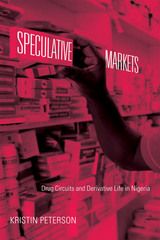 Speculative Markets: Drug Circuits and Derivative Life in Nigeria
Kristin Peterson
Duke University Press, 2014 In this unprecedented account of the dynamics of Nigeria's pharmaceutical markets, Kristin Peterson connects multinational drug company policies, oil concerns, Nigerian political and economic transitions, the circulation of pharmaceuticals in the Global South, Wall Street machinations, and the needs and aspirations of individual Nigerians. Studying the pharmaceutical market in Lagos, Nigeria, she places local market social norms and credit and pricing practices in the broader context of regional, transnational, and global financial capital. Peterson explains how a significant and formerly profitable African pharmaceutical market collapsed in the face of U.S. monetary policies and neoliberal economic reforms, and she illuminates the relation between that collapse and the American turn to speculative capital during the 1980s. In the process, she reveals the mutual constitution of financial speculation in the drug industry and the structural adjustment plans that the IMF imposed on African nations. Her book is a sobering ethnographic analysis of the effects of speculation and "development" as they reverberate across markets and continents, and play out in everyday interpersonal transactions of the Lagos pharmaceutical market.
 Speculative Relations: Indigenous Worlding and Repair
Joseph M. Pierce
Duke University Press, 2025 Indigenous relations are often described in anthropological terms, or as expressions of timeless, unchanging kinship ties. In Speculative Relations, Joseph M. Pierce challenges this view, considering the potential of these relations as a means of repairing the damages of history. Pierce approaches Indigenous art and culture not as objects of study, but through relations committed to reciprocity and care for human and more-than-human beings. Drawing on Cherokee thinking, Indigenous queer theory, literary and cultural studies, and art criticism, he illuminates pathways for understanding and resisting the ongoing damages of colonialism while pointing to future worlds and imaginaries that breathe life into Indigenous thought and practice. Analyzing a range of materials—from photography, literature, and sculpture to film and ethnography—Pierce reveals how speculation, as a form of situated knowledge production, can repair and reimagine the worlds that colonialism sought to destroy. In doing so, Pierce highlights how gestures, poetics, and embodiment can uphold tradition and harness the imaginative power of speculation to create pathways for living in good relations.
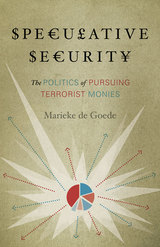 Speculative Security: The Politics of Pursuing Terrorist Monies
Marieke de Goede
University of Minnesota Press, 2012 Since the terrorist acts of September 11, 2001, finance and security have become joined in new ways to produce particular targets of state surveillance. In Speculative Security, Marieke de Goede describes how previously unscrutinized practices such as donations and remittances, especially across national borders, have been affected by security measures that include datamining, asset freezing, and transnational regulation. These “precrime” measures focus on transactions that are perfectly legal but are thought to hold a specific potential to support terrorism. The pursuit of suspect monies is not simply an issue of financial regulation, she shows, but a broad political, social, and even cultural phenomenon with profound effects on everyday life. Speculative Security offers a range of examples that illustrate the types of security interventions employed today, including the extralegal targeting and breaking up of the al-Barakaat financial network that was accompanied by raids in the United States, asset freezes in Sweden, and the incarceration of a money remitter at Guantánamo Bay. De Goede develops the paradigm of “speculative security” as a way to understand the new fusing of finance and security, denoting the speculative nature of both the means and the ends of the war on terrorist financing. Ultimately, de Goede reveals how the idea of creating “security” appeals to multiple imaginable—and unimaginable—futures in order to enable action in the present.
Speculative Whiteness: Science Fiction and the Alt-Right
Jordan S. Carroll
University of Minnesota Press, 2024 Reveals the alt-right’s project to claim science fiction and—by extension—the future
Fascists such as Richard Spencer interpret science fiction films and literature as saying only white men have the imagination required to invent a high-tech future. Other white nationalists envision racist utopias filled with Aryan supermen and all-white space colonies. Speculative Whiteness traces these ideas through the entangled histories of science fiction culture and white supremacist politics, showing that debates about representation in science fiction films and literature are struggles over who has the right to imagine and inhabit the future. Although fascists insist that tomorrow belongs to them, they have always been and will continue to be contested by antifascist fans willing to fight for the future.
Speculators And Slaves: Masters, Traders, And Slaves In The Old South
Michael Tadman
University of Wisconsin Press, 1996 In this groundbreaking work, Michael Tadman establishes that all levels of white society in the antebellum South were deeply involved in a massive interregional trade in slaves. Using countless previously untapped manuscript sources, he documents black resilience in the face of the pervasive indifference of slaveholders toward slaves and their families. This new paperback edition of Speculators and Slaves offers a substantial new Introduction that advances a major thesis of master-slave relationships. By exploring the gulf between the slaveholders’ self-image as benevolent paternalists and their actual behavior, Tadman critiques the theories of close accommodation and paternalistic hegemony that are currently influential.
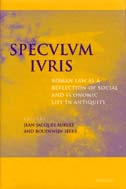 Speculum Iuris: Roman Law as a Reflection of Social and Economic Life in Antiquity
Jean-Jacques Aubert and Boudewijn Sirks, Editors
University of Michigan Press, 2002 Roman public and private law regulated many aspects of life in Antiquity. The legal sources, statutes, juristic opinions, textbooks, documents and reports preserve a wealth of information that illuminates Roman society and economy. However, the use of this kind of evidence can be extremely difficult. With this volume, classicists, historians, and legal scholars propose various ways to integrate the legal evidence with other sources for ancient social and economic history.
Speculum Iuris examines the complex relationship between law and social practice from the particular angle of Roman legislation and jurisprudence as conditioned by or reacting to a specific social, economic, and political context. Using various strategies, the editors and contributors mine a huge body of texts to study attitudes and behaviors of the Roman upper class, whose social concerns are reflected in the development of legal rules.
A close reading of juristic opinions and Republican or imperial legislation allows the contributors to find rationales behind rules and decisions in order to explain practices and mentalities of the elite within a larger social context. This book demonstrates clearly that Roman law was not divorced from the realities of daily life, even if some jurists may have been working with purely hypothetical cases.
Speculum Iuris provides a multidisciplinary approach to the question of the interplay of legal and social forces in the Roman world. As such, it will be a helpful study for general classicists and ancient historians, as well as for legal historians, social historians, economic historians, sociologists, and cultural anthropologists.
Jean-Jacques Aubert is Professor of Latin Language and Literature, University of Neuchâtel, Switzerland. Boudewijn Sirks is Professor of the History of Ancient Law, the History of European Private Law, and German Civil Law, Institute for the History of Law, Germany.
Speculum, volume 100 number 1 (January 2025)
The University of Chicago Press
University of Chicago Press Journals, 2025 This is volume 100 issue 1 of Speculum. Speculum, an English-language quarterly founded in 1926, was the first journal in North America devoted to the Middle Ages. It is open to contributions in all fields and methodologies studying the Middle Ages, a period that ranges from approximately 500 to 1500. The journal welcomes scholarship that takes a global approach as well as articles that bridge disciplines and appeal to a broad cross section of medievalists. European, Arabic, Byzantine, Hebrew, and Slavic studies are included.
Speculum, volume 100 number 2 (April 2025)
The University of Chicago Press
University of Chicago Press Journals, 2025 This is volume 100 issue 2 of Speculum. Speculum, an English-language quarterly founded in 1926, was the first journal in North America devoted to the Middle Ages. It is open to contributions in all fields and methodologies studying the Middle Ages, a period that ranges from approximately 500 to 1500. The journal welcomes scholarship that takes a global approach as well as articles that bridge disciplines and appeal to a broad cross section of medievalists. European, Arabic, Byzantine, Hebrew, and Slavic studies are included.
Speculum, volume 100 number 3 (July 2025)
The University of Chicago Press
University of Chicago Press Journals, 2025 This is volume 100 issue 3 of Speculum. Speculum, an English-language quarterly founded in 1926, was the first journal in North America devoted to the Middle Ages. It is open to contributions in all fields and methodologies studying the Middle Ages, a period that ranges from approximately 500 to 1500. The journal welcomes scholarship that takes a global approach as well as articles that bridge disciplines and appeal to a broad cross section of medievalists. European, Arabic, Byzantine, Hebrew, and Slavic studies are included.
Speculum, volume 100 number 4 (October 2025)
The University of Chicago Press
University of Chicago Press Journals, 2025 This is volume 100 issue 4 of Speculum. Speculum, an English-language quarterly founded in 1926, was the first journal in North America devoted to the Middle Ages. It is open to contributions in all fields and methodologies studying the Middle Ages, a period that ranges from approximately 500 to 1500. The journal welcomes scholarship that takes a global approach as well as articles that bridge disciplines and appeal to a broad cross section of medievalists. European, Arabic, Byzantine, Hebrew, and Slavic studies are included.
Speculum, volume 96 number 4 (October 2021)
The University of Chicago Press
University of Chicago Press Journals, 2021 This is volume 96 issue 4 of Speculum. Speculum, an English-language quarterly founded in 1926, was the first journal in North America devoted to the Middle Ages. It is open to contributions in all fields and methodologies studying the Middle Ages, a period that ranges from approximately 500 to 1500. The journal welcomes scholarship that takes a global approach as well as articles that bridge disciplines and appeal to a broad cross section of medievalists. European, Arabic, Byzantine, Hebrew, and Slavic studies are included.
Speculum, volume 97 number 1 (January 2022)
The University of Chicago Press
University of Chicago Press Journals, 2022 This is volume 97 issue 1 of Speculum. Speculum, an English-language quarterly founded in 1926, was the first journal in North America devoted to the Middle Ages. It is open to contributions in all fields and methodologies studying the Middle Ages, a period that ranges from approximately 500 to 1500. The journal welcomes scholarship that takes a global approach as well as articles that bridge disciplines and appeal to a broad cross section of medievalists. European, Arabic, Byzantine, Hebrew, and Slavic studies are included.
Speculum, volume 97 number 2 (April 2022)
The University of Chicago Press
University of Chicago Press Journals, 2022 This is volume 97 issue 2 of Speculum. Speculum, an English-language quarterly founded in 1926, was the first journal in North America devoted to the Middle Ages. It is open to contributions in all fields and methodologies studying the Middle Ages, a period that ranges from approximately 500 to 1500. The journal welcomes scholarship that takes a global approach as well as articles that bridge disciplines and appeal to a broad cross section of medievalists. European, Arabic, Byzantine, Hebrew, and Slavic studies are included.
Speculum, volume 97 number 3 (July 2022)
The University of Chicago Press
University of Chicago Press Journals, 2022 This is volume 97 issue 3 of Speculum. Speculum, an English-language quarterly founded in 1926, was the first journal in North America devoted to the Middle Ages. It is open to contributions in all fields and methodologies studying the Middle Ages, a period that ranges from approximately 500 to 1500. The journal welcomes scholarship that takes a global approach as well as articles that bridge disciplines and appeal to a broad cross section of medievalists. European, Arabic, Byzantine, Hebrew, and Slavic studies are included.
Speculum, volume 97 number 4 (October 2022)
The University of Chicago Press
University of Chicago Press Journals, 2022 This is volume 97 issue 4 of Speculum. Speculum, an English-language quarterly founded in 1926, was the first journal in North America devoted to the Middle Ages. It is open to contributions in all fields and methodologies studying the Middle Ages, a period that ranges from approximately 500 to 1500. The journal welcomes scholarship that takes a global approach as well as articles that bridge disciplines and appeal to a broad cross section of medievalists. European, Arabic, Byzantine, Hebrew, and Slavic studies are included.
Speculum, volume 98 number 1 (January 2023)
The University of Chicago Press
University of Chicago Press Journals, 2023 This is volume 98 issue 1 of Speculum. Speculum, an English-language quarterly founded in 1926, was the first journal in North America devoted to the Middle Ages. It is open to contributions in all fields and methodologies studying the Middle Ages, a period that ranges from approximately 500 to 1500. The journal welcomes scholarship that takes a global approach as well as articles that bridge disciplines and appeal to a broad cross section of medievalists. European, Arabic, Byzantine, Hebrew, and Slavic studies are included.
Speculum, volume 98 number 2 (April 2023)
The University of Chicago Press
University of Chicago Press Journals, 2023 This is volume 98 issue 2 of Speculum. Speculum, an English-language quarterly founded in 1926, was the first journal in North America devoted to the Middle Ages. It is open to contributions in all fields and methodologies studying the Middle Ages, a period that ranges from approximately 500 to 1500. The journal welcomes scholarship that takes a global approach as well as articles that bridge disciplines and appeal to a broad cross section of medievalists. European, Arabic, Byzantine, Hebrew, and Slavic studies are included.
Speculum, volume 98 number 4 (October 2023)
The University of Chicago Press
University of Chicago Press Journals, 2023 This is volume 98 issue 4 of Speculum. Speculum, an English-language quarterly founded in 1926, was the first journal in North America devoted to the Middle Ages. It is open to contributions in all fields and methodologies studying the Middle Ages, a period that ranges from approximately 500 to 1500. The journal welcomes scholarship that takes a global approach as well as articles that bridge disciplines and appeal to a broad cross section of medievalists. European, Arabic, Byzantine, Hebrew, and Slavic studies are included.
Speculum, volume 99 number 1 (January 2024)
The University of Chicago Press
University of Chicago Press Journals, 2024 This is volume 99 issue 1 of Speculum. Speculum, an English-language quarterly founded in 1926, was the first journal in North America devoted to the Middle Ages. It is open to contributions in all fields and methodologies studying the Middle Ages, a period that ranges from approximately 500 to 1500. The journal welcomes scholarship that takes a global approach as well as articles that bridge disciplines and appeal to a broad cross section of medievalists. European, Arabic, Byzantine, Hebrew, and Slavic studies are included.
Speculum, volume 99 number 2 (April 2024)
The University of Chicago Press
University of Chicago Press Journals, 2024 This is volume 99 issue 2 of Speculum. Speculum, an English-language quarterly founded in 1926, was the first journal in North America devoted to the Middle Ages. It is open to contributions in all fields and methodologies studying the Middle Ages, a period that ranges from approximately 500 to 1500. The journal welcomes scholarship that takes a global approach as well as articles that bridge disciplines and appeal to a broad cross section of medievalists. European, Arabic, Byzantine, Hebrew, and Slavic studies are included.
Speculum, volume 99 number 3 (July 2024)
The University of Chicago Press
University of Chicago Press Journals, 2024 This is volume 99 issue 3 of Speculum. Speculum, an English-language quarterly founded in 1926, was the first journal in North America devoted to the Middle Ages. It is open to contributions in all fields and methodologies studying the Middle Ages, a period that ranges from approximately 500 to 1500. The journal welcomes scholarship that takes a global approach as well as articles that bridge disciplines and appeal to a broad cross section of medievalists. European, Arabic, Byzantine, Hebrew, and Slavic studies are included.
Speculum, volume 99 number 4 (October 2024)
The University of Chicago Press
University of Chicago Press Journals, 2024 This is volume 99 issue 4 of Speculum. Speculum, an English-language quarterly founded in 1926, was the first journal in North America devoted to the Middle Ages. It is open to contributions in all fields and methodologies studying the Middle Ages, a period that ranges from approximately 500 to 1500. The journal welcomes scholarship that takes a global approach as well as articles that bridge disciplines and appeal to a broad cross section of medievalists. European, Arabic, Byzantine, Hebrew, and Slavic studies are included.
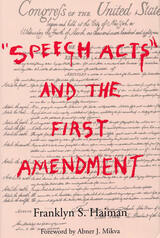 Speech Acts and the First Amendment
Franklyn S. Haiman. Foreword by Abner J. Mikva
Southern Illinois University Press, 1993
What can a democratic society reasonably do about the perplexing problems of racial intolerance, sexual harassment, incitements to violence, and invasions of privacy? Is it possible to preserve the constitutional ideal of free expression while protecting the community from those who would trample on the rights of others?
Franklyn S. Haiman critically examines the reasoning behind recent efforts to prohibit certain forms of speech and explores the possible consequences to democracy of such moves.
Speech act theory, well known to scholars of rhetoric, communication, and language, underlies this emerging trend in judicial and legislative thinking. The idea that "words are deeds," first articulated in language philosophy by Wittgenstein and elaborated by J. L. Austin and John Searle, is being invoked by some members of the legal community to target objectionable speech. For example, speech codes on some college campuses prohibit racist, sexist, and homophobic expression, and attempts have been made through local laws to classify pornography as a form of sex discrimination. By defining certain kinds of arguably immoral symbolic behavior such as hate speech, obscenity, or portrayals of violence as acts rather than as pure speech, speech act advocates make it easier to argue that such conduct should be subject to social control through the law.
Unlike totalitarian or theocratic societies that see no difference between their concept of morality and the law, however, a democracy must make a distinction between what it regards as immoral and what it makes illegal. Haiman maintains that in the realm of symbolic behavior the line between them should be drawn as closely as possible to expression that results in the most serious, direct, immediate, and physical harm to others. Thus, he joins with former Supreme Court Justice Louis Brandeis in concluding that, absent an emergency, more speech, not enforced silence, should be the aim of a free society.
Speech and Phenomena: And Other Essays on Husserl's Theory of Signs
Jacques Derrida
Northwestern University Press, 1973 In Speech and Phenomena, Jacques Derrida situates the philosophy of language in relation to logic and rhetoric, which have often been seen as irreconcilable criteria for the use and interpretations of signs. His critique of Husserl attacks the position that language is founded on logic rather than on rhetoric; instead, he claims, meaningful language is limited to expression because expression alone conveys sense. Derrida's larger project is to confront phenomenology with the tradition it has so often renounced--the tradition of Western metaphysics.
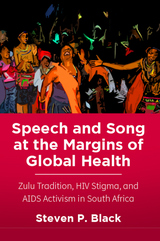 Speech and Song at the Margins of Global Health: Zulu Tradition, HIV Stigma, and AIDS Activism in South Africa
Steven P. Black
Rutgers University Press, 2019 Speech and Song at the Margins of Global Health tells the story of a unique Zulu gospel choir comprised of people living with HIV in South Africa, and how they maintained healthy, productive lives amid globalized inequality, international aid, and the stigma that often comes with having HIV. By singing, joking, and narrating about HIV in Zulu, the performers in the choir were able to engage with international audiences, connect with global health professionals, and also maintain traditional familial respect through the prism of performance. The focus on gospel singing in the narrative provides a holistic viewpoint on life with HIV in the later years of the pandemic, and the author’s musical engagement led to fieldwork in participants’ homes and communities, including the larger stigmatized community of infected individuals. This viewpoint suggests overlooked ways that aid recipients contribute to global health in support, counseling, and activism, as the performers set up instruments, waited around in hotel lobbies, and struck up conversations with passersby and audience members. The story of the choir reveals the complexity and inequities of global health interventions, but also the positive impact of those interventions in the crafting of community.
 Speech Begins after Death
Michel Foucault
University of Minnesota Press, 2016 In 1968, Michel Foucault agreed to a series of interviews with critic Claude Bonnefoy, which were to be published in book form. Bonnefoy wanted a dialogue with Foucault about his relationship to writing rather than about the content of his books. The project was abandoned, but a transcript of the initial interview survived and is now being published for the first time in English. In this brief and lively exchange, Foucault reflects on how he approached the written word throughout his life, from his school days to his discovery of the pleasure of writing. Wide ranging, characteristically insightful, and unexpectedly autobiographical, the discussion is revelatory of Foucault’s intellectual development, his aims as a writer, his clinical methodology (“let’s say I’m a diagnostician”), and his interest in other authors, including Raymond Roussel and Antonin Artaud. Foucault discloses, in ways he never had previously, details about his home life, his family history, and the profound sense of obligation he feels to the act of writing. In his Introduction, Philippe Artières investigates Foucault’s engagement in various forms of oral discourse—lectures, speeches, debates, press conferences, and interviews—and their place in his work. Speech Begins after Death shows Foucault adopting a new language, an innovative autobiographical communication that is neither conversation nor monologue, and is one of his most personal statements about his life and writing.
Speech Genres and Other Late Essays
By M.M. Bakhtin
University of Texas Press, 1986 Speech Genres and Other Late Essays presents six short works from Bakhtin's Esthetics of Creative Discourse, published in Moscow in 1979. This is the last of Bakhtin's extant manuscripts published in the Soviet Union. All but one of these essays (the one on the Bildungsroman) were written in Bakhtin's later years and thus they bear the stamp of a thinker who has accumulated a huge storehouse of factual material, to which he has devoted a lifetime of analysis, reflection, and reconsideration.
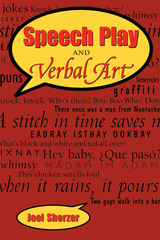 Speech Play and Verbal Art
By Joel Sherzer
University of Texas Press, 2002 Puns, jokes, proverbs, riddles, play languages, verbal dueling, parallelism, metaphor, grammatical stretching and manipulation in poetry and song— people around the world enjoy these forms of speech play and verbal artistry which form an intrinsic part of the fabric of their lives. Verbal playfulness is not a frivolous pursuit. Often indicative of people's deepest values and worldview, speech play is a significant site of intersection among language, culture, society, and individual expression. In this book, Joel Sherzer examines many kinds of speech play from places as diverse as the United States, France, Italy, Bali, and Latin America to offer the first full-scale study of speech play and verbal art. He brings together various speech-play forms and processes and shows what they have in common and how they overlap. He also demonstrates that speech play explores and indeed flirts with the boundaries of the socially, culturally, and linguistically possible and appropriate, thus making it relevant for anthropological and linguistic theory and practice, as well as for folklore and literary criticism.
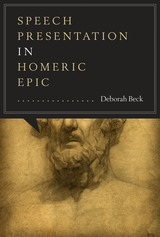 Speech Presentation in Homeric Epic
By Deborah Beck
University of Texas Press, 2012 The Iliad and the Odyssey are emotional powerhouses largely because of their extensive use of direct speech. Yet this characteristic of the Homeric epics has led scholars to underplay the poems’ use of non-direct speech, the importance of speech represented by characters, and the overall sophistication of Homeric narrative as measured by its approach to speech representation. In this pathfinding study by contrast, Deborah Beck undertakes the first systematic examination of all the speeches presented in the Homeric poems to show that Homeric speech presentation is a unified system that includes both direct quotation and non-direct modes of speech presentation. Drawing on the fields of narratology and linguistics, Beck demonstrates that the Iliad and the Odyssey represent speech in a broader and more nuanced manner than has been perceived before, enabling us to reevaluate our understanding of supposedly “modern” techniques of speech representation and to refine our idea of where Homeric poetry belongs in the history of Western literature. She also broadens ideas of narratology by connecting them more strongly with relevant areas of linguistics, as she uses both to examine the full range of speech representational strategies in the Homeric poems. Through this in-depth analysis of how speech is represented in the Homeric poems, Beck seeks to make both the process of their composition and the resulting poems themselves seem more accessible, despite pervasive uncertainties about how and when the poems were put together.
Speech Rights in America: The First Amendment, Democracy, and the Media
Laura Stein
University of Illinois Press, 2005 The First Amendment is the principle guarantor of speech rights in the United States. But the Supreme Court's interpretations of it often privilege the interests of media owners over those of the broader citizenry. Laura Stein argues that such rulings alienate citizens from their rights, corrupt the essential workings of democracy, and prevent the First Amendment from performing its critical role as a protector of free speech. Drawing on the best of the liberal democratic tradition, Stein demonstrates that there is a significant gap between First Amendment law and the speech rights necessary to democratic communication, and proposes an alternative set of principles to guide future judicial, legislative, and cultural policy on old and new media.
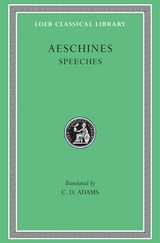 Speeches
Aeschines
Harvard University Press An adversarial advocate.
Aeschines, orator and statesman of Athens, 390 or 389–314 BC, became active in politics about 350. In 348 he was a member of a mission sent to the Peloponnese to stir up feeling against the growing power of King Philip of Macedon; but in 347, when part of a peacemaking embassy to Philip, was won over to sympathy with the king, and became a supporter of the peace policy of the Athenian statesman Eubulus. On a second embassy in 346 to ratify a peace Aeschines’ delaying tactics caused the famous orator Demosthenes and Timarchus to accuse him of treason, a charge that he successfully rebutted in the strong extant speech Against Timarchus. In 344–343, when Demosthenes accused him again in a speech, Aeschines replied in the fine extant speech having the same title On the False Embassy and was again acquitted. In 336, when Ctesiphon proposed that Demosthenes should be awarded a crown of gold for state service, Aeschines accused him of proposing something that would violate existing laws. At the trial Aeschines’ extant speech Against Ctesiphon was answered by Demosthenes in his masterpiece On the Crown. Aeschines, discredited, left Athens and set up a school of rhetoric at Rhodes. He died in Samos.
As examples of Greek oratory the speeches of Aeschines rank next to those of Demosthenes, and are important documents for the study of Athenian diplomacy and inner politics.
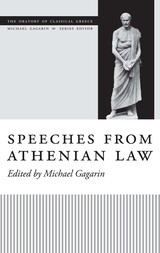 Speeches from Athenian Law
Edited by Michael Gagarin
University of Texas Press, 2011 This is the sixteenth volume in the Oratory of Classical Greece. This series presents all of the surviving speeches from the late fifth and fourth centuries BC in new translations prepared by classical scholars who are at the forefront of the discipline. These translations are especially designed for the needs and interests of today's undergraduates, Greekless scholars in other disciplines, and the general public. Classical oratory is an invaluable resource for the study of ancient Greek life and culture. The speeches offer evidence on Greek moral views, social and economic conditions, political and social ideology, law and legal procedure, and other aspects of Athenian culture that have recently been attracting particular interest: women and family life, slavery, and religion, to name just a few. This volume assembles twenty-two speeches previously published in the Oratory series. The speeches are taken from a wide range of different kinds of cases—homicide, assault, commercial law, civic status, sexual offenses, and others—and include many of the best-known speeches in these areas. They are Antiphon, Speeches 1, 2, 5, and 6; Lysias 1, 3, 23, 24, and 32; Isocrates 17, 20; Isaeus 1, 7, 8; Hyperides 3; Demosthenes 27, 35, 54, 55, 57, and 59; and Aeschines 1. The volume is intended primarily for use in teaching courses in Greek law or related areas such as Greek history. It also provides the introductions and notes that originally accompanied the individual speeches, revised slightly to shift the focus onto law.
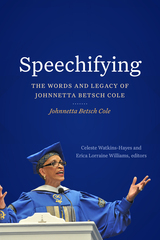 Speechifying: The Words and Legacy of Johnnetta Betsch Cole
Johnnetta Betsch Cole. Celeste Watkins-Hayes and Erica Lorraine Williams, editors
Duke University Press, 2023 Speechifying collects the most important speeches of Dr. Johnnetta Betsch Cole—noted Black feminist anthropologist, the first Black female president of Spelman College, former director of the Smithsonian Institution's National Museum of African Art, and former chair and president of the National Council of Negro Women. A powerful and eloquent orator, Dr. Cole demonstrates her commitment to the success of historically Black colleges and universities, her ideas about the central importance of diversity and inclusion in higher education, the impact of growing up in the segregated South on her life and activism, and her belief in public service. Drawing on a range of Black thinkers, writers, and artists as well as biblical scripture and spirituals, her speeches give voice to the most urgent and polarizing issues of our time while inspiring transformational leadership and change. Speechifying also includes interviews with Dr. Cole that highlight her perspective as a Black feminist, her dedication to public speaking and “speechifying” in the tradition of the Black church, and the impact that her leadership and mentorship have had on generations of Black feminist scholars.
Speechreading: A Way To Improve Understanding
Harriet Kaplan
Gallaudet University Press, 1985 Speechreading: A Way to Improve Understanding discusses the nature and process of speechreading, its benefits, and its limitations. This useful book clarifies commonly-held misconceptions about speechreading. The beginning chapters address difficult communication situations and problems related to the speaker, the speechreader, and the environment. It then offers strategies to manage them. Speechreading provides practical exercises illustrating the use ofthese communication strategies in actual situations. It is an excellent book for late-deafened adults, families and friends, parents of children with hearing loss, and professionals and students.
Speechwright: An Insider's Take on Political Rhetoric
William F. Gavin
Michigan State University Press, 2011 For almost thirty years, William F. Gavin wrote speeches at the highest levels of government. Speechwright is his insider’s view of politics, a shrewd critique of presidential and congressional rhetoric, and a personal look at the political leaders for whom he wrote speeches. While serving President Richard Nixon and candidate Ronald Reagan, Gavin advocated for “working rhetoric”—well-crafted, clear, hard-hitting arguments that did not off er visions of the unattainable, but instead limited political discourse to achievable ends reached through practical means. Filled with hard-earned wisdom about politics and its discontents, Speechwright describes Gavin’s successes, his failures, and his call for political rhetoric built on strong argument rather than the mere search for eloquence.
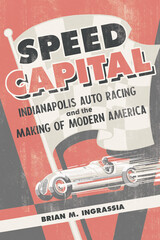 Speed Capital: Indianapolis Auto Racing and the Making of Modern America
Brian M. Ingrassia
University of Illinois Press, 2024 How a speedway became a legendary sports site and sparked America’s car culture The 1909 opening of the Indianapolis Motor Speedway marked a foundational moment in the history of automotive racing. Events at the famed track and others like it also helped launch America’s love affair with cars and an embrace of road systems that transformed cities and shrank perceptions of space. Brian Ingrassia tells the story of the legendary oval’s early decades. This story revolves around Speedway cofounder and visionary businessman Carl Graham Fisher, whose leadership in the building of the transcontinental Lincoln Highway and the iconic Dixie Highway had an enormous impact on American mobility. Ingrassia looks at the Speedway’s history as a testing ground for cars and airplanes, its multiple close brushes with demolition, and the process by which racing became an essential part of the Golden Age of Sports. At the same time, he explores how the track’s past reveals the potent links between sports capitalism and the selling of nostalgia, tradition, and racing legends.
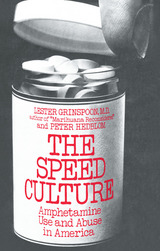 Speed Culture: Amphetamine Use and Abuse in America
Lester Grinspoon and Peter Hedblom
Harvard University Press, 1975 Speed kills—this fading bumper-sticker pun recalls the romance between the counterculture and amphetamines. But America's real involvement with "speed" began far earlier, and has endured in spite of the disasters of counterculture experimentation.
Amphetamines continue to be respectable drugs for all classes and all ages—even, increasingly, schoolchildren. Unlike alcohol, marihuana, opium, and cocaine—the other "recreational" drugs—amphetamine and its relatives have no natural source or long cultural tradition. They are entirely a product of modern laboratories. Available for less than forty years, during most of their history they have borne the stamp of official scientific and medical approval. Their deleterious effects—including severe habituation—have only slowly been recognized, and today there is still a sizable constituency favoring their use in so-called hyperkinetic children as well as in obese and depressed adults.
Lester Grinspoon, author of Marihuana Reconsidered, and Peter Hedblom have taken a hard look at the amphetamines and their effects on man. They explore the social forces that favor use of these substances: drug-company profits, medical convenience, and user acceptance. And they analyze evidence showing that amphetamines are dangerous and unnecessary drugs, perhaps even when prescribed by physicians. At a time when federal action against the illicit use of amphetamines is becoming more and more stringent, Grinspoon and Hedblom find that pressures to expand their "legitimate" use remain intense, however questionable the results. They illustrate explicit efforts to expand the use of such drugs through advertisements implying "that human life itself is a drug-deficiency disease." And they explore the more pervasive and subtler cultural pressures for conformity to an impossible ideal of physical and intellectual vigor, industriousness, and efficiency—an ideal that amphetamines once seemed to put in the reach of every man.
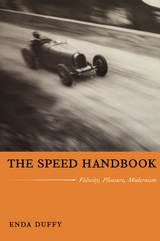 The Speed Handbook: Velocity, Pleasure, Modernism
Enda Duffy
Duke University Press, 2009 Speed, the sensation one gets when driving fast, was described by Aldous Huxley as the single new pleasure invented by modernity. The Speed Handbook is a virtuoso exploration of Huxley’s claim. Enda Duffy shows how the experience of speed has always been political and how it has affected nearly all aspects of modern culture. Primarily a result of the mass-produced automobile, the experience of speed became the quintessential way for individuals to experience modernity, to feel modernity in their bones. Duffy plunges full-throttle into speed’s “adrenaline aesthetics,” offering deft readings of works ranging from F. Scott Fitzgerald’s The Great Gatsby, through J. G. Ballard’s Crash, to the cautionary consumerism of Ralph Nader. He describes how speed changed understandings of space, distance, chance, and violence; how the experience of speed was commodified in the dawning era of mass consumption; and how society was incited to abhor slowness and desire speed. He examines how people were trained by new media such as the cinema to see, hear, and sense speed, and how speed, demanded of the efficient assembly-line worker, was given back to that worker as the chief thrill of leisure. Assessing speed’s political implications, Duffy considers how speed pleasure was offered to citizens based on criteria including their ability to pay and their gender, and how speed quickly became something to be patrolled by governments. Drawing on novels, news reports, photography, advertising, and much more, Duffy provides a breakneck tour through the cultural dynamics of speed.
Speed Trap: eighty robberies and fifty years
William W. Allen
Parkhurst Brothers, Inc., 2012 “In this personal account that reads like a novel,
Allen describes the exhilaration of his youthful rule-breaking behavior
as well as the crushing reality that followed.”
– William Stephens, Ph.D.
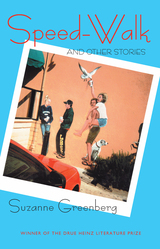 Speed-Walk and Other Stories
Suzanne Greenberg
University of Pittsburgh Press, 2003 The characters in Speed-Walk and Other Stories often find themselves dislocated, living in places that do not resemble or feel like home. Their lives have somehow been turned on their axes, and often they cannot comprehend why. The stories in this stunning debut collection are united by their protagonists' common quest to make sense of the world, to bring it into focus, to set it right, to adapt.
In selecting Suzanne Greenberg's fiction for the 2003 Drue Heinz Literature Prize, Rick Moody wrote, “A charge sometimes leveled against contemporary fiction these days is that it has abrogated its responsibility to depict civilization as it actually exists. . . . Speed-Walk replies forcefully to this aesthetic error by locating its protagonists in completely recognizable environments. . . . [They] are ever engaged by the routines of American life: walking the dog, eating at the sushi bar, doing the laundry.” Tightly written yet realistically spare, these stories provide a blueprint for survival when the unexpected is thrust into an ordinary life.
The Spell of Capital: Reification and Spectacle
Edited by Samir Gandesha and Johan F. Hartle
Amsterdam University Press, 2017 This book explores the tradition, impact, and contemporary relevance of two key ideas from Western Marxism: Georg Lukács's concept of reification, in which social aspects of humanity are viewed in objectified terms, and Guy Debord's concept of the spectacle, where the world is packaged and presented to consumers in uniquely mediated ways. Bringing the original, yet now often forgotten, theoretical contexts for these terms back to the fore, Johan Hartle and Samir Gandesha offer a new look at the importance of Western Marxism from its early days to the present moment-and reveal why Marxist cultural critique must continue to play a vital role in any serious sociological analysis of contemporary society.
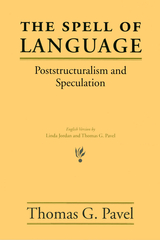 The Spell of Language: Poststructuralism and Speculation
Thomas G. Pavel
University of Chicago Press, 2001 Originally published as Le Mirage linguistique, this book remains the definitive study of the role of linguistics in structuralism and poststructuralism. Thomas Pavel examines recent French thought through the work of luminaries such as Lévi-Strauss, Lacan, Foucault, and Derrida. The "spell of language" for Pavel consists of three things: the promise that linguistics seemed to represent for the humanities and social sciences; the distortions, misunderstandings, and willful neglect incumbent upon the "linguistic turn"; and, above all, the break with traditional humanism. He isolates three modes of thought-moderate structuralism, scientific structuralism, and speculative structuralism-and shows how even as they diverge from each other, they all advocate an antihumanist point of view.
In this spirited book, Pavel shows that structuralism's flawed use of linguistic theory has rendered hollow the philosophical core of a whole generation of work in the human sciences.
 A Spell on the Water
Marjorie Kowalski Cole
University of Michigan Press, 2011
"I couldn't put it down."
---Barbara Kingsolver
In 1955, Mary and Jim Leader have the American dream: careers in medicine; a young and healthy family; and even a vacation home---a shabby resort far from bustling Chicago. But one hot afternoon changes everything. Mary, now a widow, must find a path out of her grief into a future for herself and five small children.
In Michigan to sell the resort, Mary sees seven hawks riding the storm winds over the lake. This place, she thinks, can heal them with its wild beauty, so she moves her family to the northern lakeshore.
But Mary has forgotten what it's like to live in a tiny rural community, where almost everyone has a stake in maintaining the status quo. Secrets are kept at great cost as Mary's children often struggle to raise themselves. A coming-of-age story for each member of the family, this is a novel of quiet heroism and the power of personal freedom.
Praise for Marjorie Kowalski Cole and her previous novel, Correcting the Landscape:
". . . her writing is simple, vivid and gorgeous."
---Eugene Register-Guard
". . . a remarkable new talent. Critics have lined up to praise the book."
---Tucson Citizen
"Cole's style is subtle but engrossing . . . It is quite a debut."
---Booklist
Cover illustration: ©iStockphoto.com/ImagineGolf
Spellbound: Rethinking the Alphabet
Craig McDaniel and Jean Robertson
Intellect Books, 2016 Asserting that written language is on the verge of its greatest change since the advent of the printing press, visual artist Craig McDaniel and art historian Jean Robertson bring us Spellbound—a collection of heavily illustrated essays that interrogate assumptions about language and typography. Rethinking the alphabet, they argue, means rethinking human communication. Looking beyond traditional typography, the authors conceive of new languages in which encoded pictorial images offer an unparalleled fusion of art and language. In a world of constant technological innovation offered by e-books, tablets, cell phones, and the Internet, McDaniel and Robertson demonstrate provocatively what it would mean to move beyond the alphabet we know to a wholly new system of written communication.
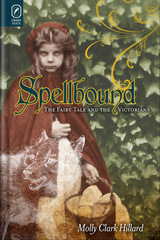 Spellbound: The Fairy Tale and the Victorians
Molly Clark Hillard
Ohio State University Press, 2014 In examining the relationship between fairy tales and Victorian culture, Molly Clark Hillard concludes that the Victorians were “spellbound”: novelists, poets, and playwrights were self-avowedly enchanted by these tales. At the same time, Spellbound: The Fairy Tale and the Victorians shows that literary genres were bound to the fairy tale and dependent on its forms and figures to make meaning. But these “spellbound” literary artists also feared that fairy tales exuded an originative power that pervaded and precluded authored work. In part to dispel the fairy tale’s potency, Victorians resolved this tension by treating the form as a nostalgic refuge from an industrial age, a quaint remnant of the pre-literacy of childhood and peasantry, and a form fit not for modern gentlemen but rather for old wives.
Through close readings of the novels of Dickens, Eliot, and Charlotte Brontë; the poetry of Tennyson and Christina Rossetti; the visual artistry of Burne-Jones and Punch; and the popular theatricals of dramatists like Planche and Buckingham, Spellbound opens fresh territory into well-traversed titles of the Victorian canon. Hillard demonstrates that these literary forms were all cross-pollenated by the fairy tale and that their authors were—however reluctantly—purveyors of disruptive fairy tale matter over which they had but imperfect control.
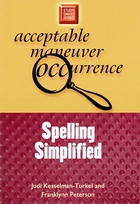 Spelling Simplified
Judi Kesselman-Turkel and Franklynn Peterson
University of Wisconsin Press, 2004 THE STUDY SMART SERIES, designed for students from junior high school through lifelong learning programs, teaches skills for research and note-taking, provides exercises to improve grammar, and reveals secrets for putting these skills together in great essays.
Millions of people want to learn to spell correctly, but they fear the task will be tedious and painful. Now, with the unique, logical approach presented in Spelling Simplified, anyone can become a skilled speller quickly and easily. Through the use of simple and effective exercises and tips, Spelling Simplified illustrates what many poor spellers forget—that the way a word is spelled is closely related to the sound and meaning of that word.
Chapters devoted to syllables and stress, patterns in the language, consonant clusters, and vowel-consonant combinations are included, each complete with its own set of examples and exercises. From the simplest root words through longer words derived from foreign languages, Spelling Simplified guides you through basic techniques for learning how to “hear” a word, how to master irregularities, and how to form large words from smaller ones. Breezily written and easy to use, Spelling Simplified shows that mastering spelling cn be painless—and even fun.
Spencer Kimball's Record Collection: Essays on Mormon Music
Michael Hicks
Signature Books, 2020 At times jubilant, at times elegiac, this set of ten essays by music historian Michael Hicks navigates topics that range from the inner musical life of Joseph Smith to the Mormon love of blackface musicals, from endless wrangling over hymnbooks to the compiling of Mormon folk and exotica albums in the 1960s. It also offers a brief memoir of what happened to LDS Church President Spencer Kimball’s record collection and a lengthy, brooding piece on the elegant strife it takes to write about Mormon musical history in the first place. There are surprises and provocations, of course, alongside judicious sifting of sources and weighing of evidence. The prose is fresh, the research smart, and the result a welcome mixture of the careful and the carefree from Mormonism’s best-known scholar of musical life.
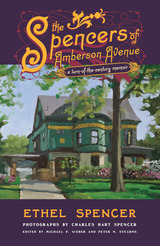 The Spencers of Amberson Avenue: A Turn-of-the-Century Memoir
Ethel Spencer
University of Pittsburgh Press, 1983
This appealing memoir introduces the family of Charles Hart Spencer and his wife Mary Acheson: seven children born between 1884 and 1895. It also introduces a large Victorian house in Shadyside (a Pittsburgh neighborhood) and a middle-class way of life at the turn of the century.
Mr. Spencer, who worked—not very happily—for Henry Clay Frick, was one of the growing number of middle-management employees in American industrial cities in the 1880s and 1890s. His income, which supported his family of nine, a cook, two regular nurses, and at times a wet nurse and her baby, guaranteed a comfortable life but not a luxurious one. In the words of the editors, the Spencers represent a class that "too often stands silent or stereotyped as we rush forward toward the greater glamour of the robber barons or their immigrant workers."
Through the eyes of Ethel Spencer, the third daughter, we are led with warmth and humor through the routine of everyday life in this household: school, play, church on Sundays, illness, family celebrations, and vacations. Ethel was an observant child, with little sentimentality, and she wrote her memoir in later life as a professor of English with a gift for clear prose and the instincts of an anthropologist. As the editors observe, her memoir is "a fascinating insight into one kind of urban life of three generations ago."
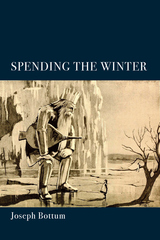 Spending the Winter: A Poetry Collection
Joseph Bottum
St. Augustine's Press, 2022 The poetry of Spending the Winter is musical and structured, whimsical and piercing, begging to be read aloud when one is not laughing or arrested by an image that hooks the heart. “Poems so severely beautiful that they become unforgettable after one reading,” writes one poet. “A throwback to a time when lovers of poetry…looked for poetry of depth, wit, and craft from the likes of Auden and Larkin,” adds another. With sections of comedy that show his wit, translations that echo his vast reading, and formalist poetry that reveal his craft, Bottum aims, in the way few poets these days do, at memorable lines and heart-stopping images as he seeks the deep stuff of human experience: God and birth and death—the beautiful and terrifying finitude of life. “We do with words what little words can do,” he writes. But in Spending the Winter, Joseph Bottum shows that words can do far more than a little.
“Poems so severely beautiful that they become unforgettable after one reading. . . . If you’re a reader who loves poetry whatever mood it’s in, just open Spending the Winter anywhere to find poems that hurt, enlighten, and delight.” —Rhina P. Espaillat, author of Rehearsing Absence and winner of the T.S. Eliot Prize
“Joseph Bottum is a brilliant formalist, and to read him is to enter the world of the tried-and-true classics, all achieved with an amazingly contemporary ring. His Spending the Winter is a delight. Here is a poetry of elegy, humor, wit, political savvy, and vast learning.” —Paul Mariani, author The Great Wheel and winner of the John Ciardi Award
“Joseph Bottum’s Spending the Winter is a throwback to a time when lovers of poetry outside the literary establishment looked for poetry of depth, wit, and craft from the likes of Auden and Larkin. This is poetry from another age—an age when we expected intellectual, religious, and literary significance from our verse.” —A.M. Juster, author of Wonder and Wrath and winner of the Willis Barnstone Translation Prize
“Spending the Winter is a word-lover’s dream: Joseph Bottum’s poems pierce, probe, dazzle, and delight. They will open the eyes of your soul.” —Karen Swallow Prior, author of On Reading Well
“When reading Spending the Winter, I recalled C.S. Lewis’s description of joy as a wanting for something that is beyond this world. There’s a sense in these poems that things around us are fleeting, yet for that reason, the poems ask us to pay all the more attention.” —Jessica Hooten Wilson, author of Giving the Devil his Due
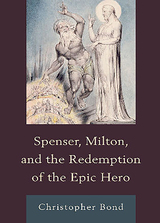 Spenser, Milton, and the Redemption of the Epic Hero
Christopher Bond
University of Delaware Press, 2011 This book studies the interplay of theology and poetics in the three great epics of early-modern England: the Faerie Queene, Paradise Lost, and Paradise Regained. Bond examines the relationship between the poems’ primary heroes, Arthur and the Son, who are godlike, virtuous, and powerful, and the secondary heroes, Redcrosse and Adam, who are human, fallible, and weak. He looks back at the development of this pattern of dual heroism in classical, Medieval, and Italian Renaissance literature, investigates the ways in which Spenser and Milton adapted the model, and demonstrates how the Jesus of Paradise Regained can be seen as the culmination of this tradition. Challenging the opposition between “Calvinist,” “allegorical” Spenser and “Arminian,” “dramatic” Milton, this book offers a new account of their doctrinal and literary affinities within the European epic tradition. Arguing that Spenser influenced Milton in fundamental ways, Bond establishes a firmer structural and thematic link between the two authors, and shows how they transformed a strongly antifeminist genre by the addition of a crucial, although at times ambivalent, heroine. He also proposes solutions to some of the most difficult and controversial theological cruxes posed by these poems, in particular Spenser’s attitude to free will and Milton’s to the Trinity. By providing a deeper understanding of the religious agendas of these epics, this book encourages a rapprochement between scholarly approaches that are too narrowly concerned with either theology or poetics.
Spenser Studies: A Renaissance Poetry Annual, volume 35 number 1 (2021)
The University of Chicago Press
University of Chicago Press Journals, 2021 Spenser Studies is devoted to the study of Edmund Spenser as well as the poetry of Renaissance England. Contributions examine Spenser’s place in literary history, the social and religious contexts of his writing, and the philosophical and conceptual problems he grapples with in his art. The journal also features work on Renaissance literary culture, broadly conceived. Past issues have published studies ranging from the diction of Stephen Hawes to female authorship in Mary Wroth’s Urania to the influence of English Renaissance sonneteers on William Butler Yeats.
Spenser Studies: A Renaissance Poetry Annual, volume 36 number 1 (2022)
The University of Chicago Press
University of Chicago Press Journals, 2022 Spenser Studies is devoted to the study of Edmund Spenser as well as the poetry of Renaissance England. Contributions examine Spenser’s place in literary history, the social and religious contexts of his writing, and the philosophical and conceptual problems he grapples with in his art. The journal also features work on Renaissance literary culture, broadly conceived. Past issues have published studies ranging from the diction of Stephen Hawes to female authorship in Mary Wroth’s Urania to the influence of English Renaissance sonneteers on William Butler Yeats.
Spenser Studies, volume 37 number 1 (2023)
The University of Chicago Press
University of Chicago Press Journals, 2023 This is volume 37 issue 1 of Spenser Studies. Spenser Studies is devoted to the study of Edmund Spenser as well as the poetry of Renaissance England. Contributions examine Spenser’s place in literary history, the social and religious contexts of his writing, and the philosophical and conceptual problems he grapples with in his art. The journal also features work on Renaissance literary culture, broadly conceived. Past issues have published studies ranging from the diction of Stephen Hawes to female authorship in Mary Wroth’s Urania to the influence of English Renaissance sonneteers on William Butler Yeats.
Spenser Studies, volume 38 number 1 (2024)
The University of Chicago Press
University of Chicago Press Journals, 2024 This is volume 38 issue 1 of Spenser Studies. Spenser Studies is devoted to the study of Edmund Spenser as well as the poetry of Renaissance England. Contributions examine Spenser’s place in literary history, the social and religious contexts of his writing, and the philosophical and conceptual problems he grapples with in his art. The journal also features work on Renaissance literary culture, broadly conceived. Past issues have published studies ranging from the diction of Stephen Hawes to female authorship in Mary Wroth’s Urania to the influence of English Renaissance sonneteers on William Butler Yeats.
Spenser Studies, volume 39 number 1 (2025)
The University of Chicago Press
University of Chicago Press Journals, 2025 This is volume 39 issue 1 of Spenser Studies. Spenser Studies is devoted to the study of Edmund Spenser as well as the poetry of Renaissance England. Contributions examine Spenser’s place in literary history, the social and religious contexts of his writing, and the philosophical and conceptual problems he grapples with in his art. The journal also features work on Renaissance literary culture, broadly conceived. Past issues have published studies ranging from the diction of Stephen Hawes to female authorship in Mary Wroth’s Urania to the influence of English Renaissance sonneteers on William Butler Yeats.
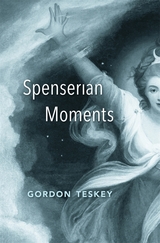 Spenserian Moments
Gordon Teskey
Harvard University Press, 2019 From the distinguished literary scholar Gordon Teskey comes an essay collection that restores Spenser to his rightful prominence in Renaissance studies, opening up the epic of The Faerie Queene as a grand, improvisatory project on human nature, and arguing—controversially—that it is Spenser, not Milton, who is the more important and relevant poet for the modern world.
There is more adventure in The Faerie Queene than in any other major English poem. But the epic of Arthurian knights, ladies, and dragons in Faerie Land, beloved by C. S. Lewis, is often regarded as quaint and obscure, and few critics have analyzed the poem as an experiment in open thinking. In this remarkable collection, the renowned literary scholar Gordon Teskey examines the masterwork with care and imagination, explaining the theory of allegory—now and in Edmund Spenser’s Elizabethan age—and illuminating the poem’s improvisatory moments as it embarks upon fairy tale, myth, and enchantment.
Milton, often considered the greatest English poet after Shakespeare, called Spenser his “original.” But Teskey argues that while Milton’s rigid ideology in Paradise Lost has failed the test of time, Spenser’s allegory invites engagement on contemporary terms ranging from power, gender, violence, and virtue ethics, to mobility, the posthuman, and the future of the planet. The Faerie Queene was unfinished when Spenser died in his forties. It is the brilliant work of a poet of youthful energy and philosophical vision who opens up new questions instead of answering old ones. The epic’s grand finale, “The Mutabilitie Cantos,” delivers a vision of human life as dizzyingly turbulent and constantly changing, leaving a future open to everything.
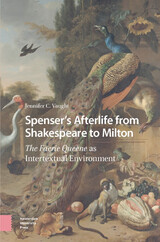 Spenser’s Afterlife from Shakespeare to Milton: The Faerie Queene as Intertextual Environment
Jennifer C. Vaught
Amsterdam University Press, 2025 This study explores how Shakespeare, Ben Jonson, Andrew Marvell, and Milton among many others appropriated Spenser’s long and shorter poems for creating comedy, parody, and satire. Their appropriations, which were widely influential on communities of readers, writers, and intertextual networks from 1590–1660, left an abiding impression of Spenser as a biting satirist. Spenser’s Afterlife from Shakespeare to Milton: 'The Faerie Queene' as Intertextual Environment is the first study to combine the reception history of The Faerie Queene with ecocriticism, animal studies, and posthumanist tenets of vital materialism and the power of things. This poem functions as a powerful, nonhuman agent that transforms how readers respond to their environments. The Faerie Queene and its afterlives move readers to perceive flaws in political, social, and religious figureheads and institutions to envision better ones.
 Spenser’s Art: A Companion to Book One of The Faerie Queene
Mark Rose
Harvard University Press, 1975 Edmund Spenser's art is intricate, intellectual, fanciful, and, finally, magnificent. Spenser is enshrined as one of the great English writers, and Book One of The Faerie Queene is regularly taught in colleges, not only in advanced courses but also in introductory surveys. Many teachers as well as students, however, find the poem baffling and know of no way to approach it except as an allegory whose several levels of meaning must be deciphered. Mark Rose shows that it is possible to read the poem as poetry—savoring the language, tracing Spenser's vision—without prior expertise in religion and philosophy, Renaissance iconography and mythology, or Tudor history. He offers a close reading of Book One, following the poem as it develops canto by canto.
Rather than expound the meaning, he attempts to draw the meaning out of the text while helping the reader respond freshly to the emotion, humor, grace, and humanity of the poem and conveying a sense of its richness and subtlety. Specialists will find many new insights in Spenser's Art, though the book is not addressed primarily to them; teachers who are not experts on Spenser will find it especially rewarding.
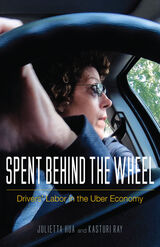 Spent behind the Wheel: Drivers' Labor in the Uber Economy
Julietta Hua
University of Minnesota Press, 2021 Exploring professional passenger driving and the gig economy through feminist theories of labor
Are taxi drivers in today’s era of the ride-hail app performing care work akin to domestic and household labor? So argue the authors of Spent behind the Wheel. Bringing together sociological and legal perspectives with feminist theoretical insights, Julietta Hua and Kasturi Ray examine the case study of contemporary professional passenger driving in the United States. On the one hand, they show, the rise of the gig economy has brought new attention to the industry of professional passenger driving. On the other hand, the vulnerabilities that professional drivers experience remain hidden. Drawing on interviews with drivers, labor organizers, and members of licensing commissions, as well as case law and other published resources, Hua and Ray argue that working for ride-hail companies like Uber and Lyft shares similarities with driving for taxi companies in the impact on driver lives. Lyft and Uber sell the idea of industry disruption, but in fact they entrench long-standing modes of extracting the reproductive labor of their drivers for the benefit of consumer lives. Reproductive labor—conventionally understood as feminized labor—is extracted, but masked, behind the masculinized, racialized bodies of drivers. Professional driving is thus best understood alongside domestic and other gendered service work as reproductive labors devalued and often demonetized to benefit the national economy. Spent behind the Wheel is a must for readers interested in critical studies of technological change and the gig economy, showing how drivers’ capacities are drained for the benefit of riders, corporations, and the maintenance of the racial state.
Spent Cartridges of Revolution: An Anthropological History of Namiquipa, Chihuahua
Daniel Nugent
University of Chicago Press, 1993 What happens to a revolutionary town after the revolution? This apparently simple question frames Spent Cartridges of Revolution, an anthropological history of Namiquipa, Chihuahua, Mexico. Officially, the revolution of 1910-20 restored control over land and local politics to the peasantry. But Namiquipan peasants, who fought alongside Pancho Villa, have seen little progress and consider themselves mere "spent cartridges" of a struggle that benefited other classes.
Daniel Nugent's approach combines an emphasis on peasants' own perceptions of Mexican society after the revolution with an analysis of the organization and formation of state power. He shows that popular discontent in Chihuahua is motivated not only by immediate economic crises but by two centuries of struggle between the people of Northern Mexico and the government.
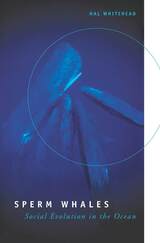 Sperm Whales: Social Evolution in the Ocean
Hal Whitehead
University of Chicago Press, 2003 Famed in story as "the great leviathans," sperm whales are truly creatures of extremes. Giants among all whales, they also have the largest brains of any creature on Earth. Males can reach a length of sixty-two feet and can weigh upwards of fifty tons.
With this book, Hal Whitehead gives us a clearer picture of the ecology and social life of sperm whales than we have ever had before. Based on almost two decades of field research, Whitehead describes their biology, behavior, and habitat; how they organize their societies; and how their complex lifestyles may have evolved in this unique environment. Among the many fascinating topics he explores is the crucial role that culture plays in the life of the sperm whale, and he traces the consequences of this argument for both evolution and conservation. Finally, drawing on these findings, Whitehead builds a general model of how the ocean environment influences social behavior and cultural evolution among mammals as well as other animals.
The definitive portrait of a provocative creature, Sperm Whales will interest animal behaviorists, conservationists, ecologists, and evolutionary biologists as well as marine mammalogists.
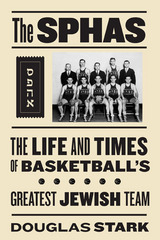 The SPHAS: The Life and Times of Basketball's Greatest Jewish Team
Authored by Doug Stark
Temple University Press, 2011 Founded in 1918, the South Philadelphia Hebrew Association's basketball team, known as the SPHAS, was a top squad in the American Basketball League-capturing seven championships in thirteen seasons-until it disbanded in 1959. In The SPHAS, the first book to chronicle the history of this team and its numerous achievements, Douglas Stark uses rare and noteworthy images of players and memorabilia as well as interviews and anecdotes to recall how players like Inky Lautman, Cy Kaselman, and Shikey Gotthoffer fought racial stereotypes of weakness and inferiority while spreading the game's popularity. Team owner Eddie Gottlieb and Temple University coach Harry Litwack, among others profiled here, began their remarkable careers with the SPHAS.
Stark explores the significance of basketball to the Jewish community during the game's early years, when Jewish players dominated the sport and a distinct American Jewish identity was on the rise. At a time when basketball teams were split along ethnic lines, the SPHAS represented the Philadelphia Jewish community. The SPHAS is an inspiring and heartfelt tale of the team on and off the court.
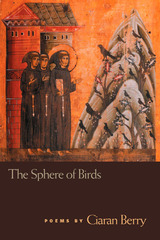 The Sphere of Birds
Ciaran Berry
Southern Illinois University Press, 2008 The Sphere of Birds, Ciaran Berry’s debut collection of poems, effortlessly moves back and forth between here and there, then and now, the personal and the historic, the modern and the mythic. Berry imagines the transatlantic journeys of John James Audubonand reveals his own heartfelt experience moving from his first house. The poems take as their subject such varied experiences as an eye exam in Manhattan and chasing rabbits around a beach in Donegal. These poems have a strong sense of place, whether it’s the imagined space of Coney Island in 1903 or the playground of Berry’s childhood convent school. The Sphere of Birds delights in forging unlikely links, earthed in the stuff of paintings and in the lives of poets, artists, and the occasional saint. Drawing on the poet’s life in Ireland and the United States, the poems explore the joy and grief found in those places. Moving from rural Ireland to the heart of New York City, from local detail to historical specifics, and from the experienced occasion to the imagined or interpreted event, Berry’s poems effectively master shifts in both time and space. Berry delves into the lives of artists, obscure historical figures, and other poets for inspiration. He embraces elements of both Irish and American poetry, paying tribute as much to the spirit of Larry Levis as to that of W. B. Yeats. Accessible, immediate, and visceral, The Sphere of Birds offers a musicality that is increasingly rare in contemporary poetry.
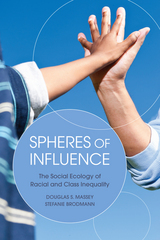 Spheres of Influence: The Social Ecology of Racial and Class Inequality
Douglas S. Massey
Russell Sage Foundation, 2014 The black-white divide has long haunted the United States as a driving force behind social inequality. Yet, the civil rights movement, the increase in immigration, and the restructuring of the economy in favor of the rich over the last several decades have begun to alter the contours of inequality. Spheres of Influence, co-authored by noted social scientists Douglas S. Massey and Stefanie Brodmann, presents a rigorous new study of the intersections of racial and class disparities today. Massey and Brodmann argue that despite the persistence of potent racial inequality, class effects are drastically transforming social stratification in America. This data-intensive volume examines the differences in access to material, symbolic, and emotional resources across major racial groups. The authors find that the effects of racial inequality are exacerbated by the class differences within racial groups. For example, when measuring family incomes solely according to race, Massey and Brodmann found that black families' average income measured $28,400, compared to Hispanic families' $35,200. But this gap was amplified significantly when class differences within each group were taken into account. With class factored in, inequality across blacks' and Hispanics' family incomes increased by a factor of almost four, with lower class black families earning an average income of only $9,300 compared to $97,000 for upper class Hispanics. Massey and Brodmann found similar interactions between class and racial effects on the distribution of symbolic resources, such as occupational status, and emotional resources, such as the presence of a biological father—across racial groups. Although there are racial differences in each group's access to these resources, like income, these disparities are even more pronounced once class is factored in. The complex interactions between race and class are apparent in other social spheres, such as health and education. In looking at health disparities across groups, Massey and Brodmann observed no single class effect on the propensity to smoke cigarettes. Among whites, cigarette smoking declined with rising class standing, whereas among Hispanics it increased as class rose. Among Asians and blacks, there was no class difference at all. Similarly, the authors found no single effect of race alone on health: Health differences between whites, Asians, Hispanics, and blacks were small and non-significant in the upper class, but among those in the lower class, intergroup differences were pronounced. As Massey and Brodmann show, in the United States, a growing kaleidoscope of race-class interactions has replaced pure racial and class disadvantages. By advancing an ecological model of human development that considers the dynamics of race and class across multiple social spheres, Spheres of Influence sheds important light on the factors that are currently driving inequality today.
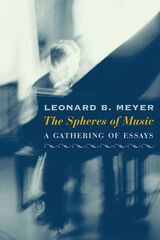 The Spheres of Music: A Gathering of Essays
Leonard B. Meyer
University of Chicago Press, 2000 Leonard B. Meyer's writings on the theory, history, perception, and aesthetics of music have inspired and provoked generations of readers. The Spheres of Music makes available a selection of his most important essays (originally published between 1974 and 1998). Gathering them together in one volume not only enables the essays to "converse" with and illuminate each other, but also allows Meyer to revise, recant, and comment on the ideas they present.
With the same sensitive insight and searching intelligence he has exhibited throughout his career, Meyer transcends the boundaries that so often separate fields of inquiry. The Spheres of Music joins music theory to history, history to culture, culture to aesthetics, aesthetics to psychology, and psychology back to theory. In so doing, the book highlights the complex interrelationships at the heart of the creation, comprehension, and history of music. Diverse and adventurous, The Spheres of Music presents an intriguing and impressive collection of Meyer's work.
"Ever since the publication of his Emotion and Meaning in Music . . . I have considered Leonard B. Meyer one of the keenest thinkers about music among us."—Winthrop Sargeant, The New Yorker
Spherical Near-field Antenna Measurements
J.E. Hansen
The Institution of Engineering and Technology, 1988 The subject of antenna measurements is one which has undergone revolutionary changes in recent years, in particular within space applications, where high demands are placed upon antenna design and construction.
 The Spice of Popery: Converging Christianities on an Early American Frontier
Laura M. Chmielewski
University of Notre Dame Press, 2012
The title for this work comes from the Puritan minister Increase Mather, who used the colorful metaphor to express his concern about the state of English Protestantism. Like many New Englanders, Mather’s fears about the creeping influence of French Catholicism stemmed from English conflicts with France that spilled over into the colonial frontiers from French Canada. The most consistently fragile of these frontiers was the Province of Maine, notorious for attracting settlers who had “one foot out the door” of New England Puritanism. It was there that English Protestants and French Catholics came into frequent contact. The Spice of Popery: Converging Christianities on an Early American Frontier shows how, between the volatile years of 1688 to 1727, the persistence of Catholic people and culture in New England's border regions posed consistent challenges to the bodies and souls of frontier Protestants.
Taking a cue from contemporary observers of religious culture, as well as modern scholars of early American religion, social history, material culture, and ethnohistory, Laura M. Chmielewski explores this encounter between opposing Christianities on an early American frontier. She examines the forms of lived religion and religious culture—enacted through gestures, religious spaces, objects, and discreet religious expressions—to elucidate the range of experience of its diverse inhabitants: accused witches, warrior Jesuits, unorthodox ministers, indigenous religious thinkers, voluntary and involuntary converts. Chmielewski offers a nuanced perspective of the structured categories of early American Christian religious life, suggesting that the terms “Protestant” and “Catholic” varied according to location and circumstances and that the assumptions accompanying their use had long-term consequences for generations of New Englanders.
"Laura Chmielewski's The Spice of Poperyis an inspired contribution to our understanding of 'entangled Christianities' in early America—erudite, thorough, and eminently readable." —Edwin G. Burrows, Distinguished Professor of History, Brooklyn College, City University of New York
"In her beautifully written and richly researched study, Laura Chmielewski provides an important new interpretation of the borderlands between French and English settlements in North America. She persuasively argues that this boundary was far more permeable than we have imagined, for despite prejudices and hostilities on both sides, these frontier colonists adapted and adopted many of their enemy’s cultural and religious patterns. Connections were made, kinships formed, and histories were shared, and what they—and we—once thought of as a firm barrier turns out to be a middle ground of exchange and synthesis. Anyone interested in early American history should read this book." —Carol Berkin, Presidential Professor of History, Baruch College and The Graduate Center, CUNY
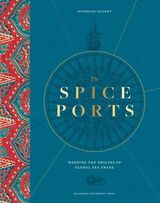 The Spice Ports: Mapping the Origins of Global Sea Trade
Nicholas Nugent
Brandeis University Press, 2024 A first-class narrative writer blends his unique cartographic and topographic understanding of the key ports of early seaborne commerce.
We may think of “globalism” as a recent development but its origins date back to the fifteenth century and beyond, when seafarers pioneered routes across the oceans with the objectives of exploration, trade, and profit.
These voyages only became possible after certain technical innovations—improvements in ship design, compasses, and mapping—enabled navigation across unprecedented distances. The mariners’ embarkation points were the vibrant ports of the West—Venice, Amsterdam, Lisbon—and their destinations the exotic ports of the East—Malacca, Goa, Bombay—where they tracked down the elusive spices, so much in demand by Western palates.
This development of maritime communication brought benefits apart from culinary delights: the spread of ideas on art, literature, and science. But it was not necessarily beneficial for everyone concerned: colonial ambitions were often disastrous for local populations, who were frequently exploited as slave plantation labor.
This wide-ranging account of a fascinating period of global history uses original maps and contemporary artists’ views to tell the story of how each port developed individually while also encouraging us to consider contrasting points of view of the benefits and the damages of the maritime spice trade.
 The Spider
Aurko Maitra
Seagull Books, 2025 A tale of mercenaries and myths, set amid the political turmoil of Bengal.
In the largely undocumented sphere of political violence in eastern India, Qadir the Spider is a mythological killer and casanova, known for the various assassinations and liaisons he carries out across the region. His oldest son Rahim is the latest entry to the field. A 13-year-old killer, the boy bides his time like his father—killing, farming, and getting high as the battles go on around him. In this world where they only follow orders, mutilation becomes their only expression, the nature of violence their only meaningful form of autonomy in the various power struggles of interior Bengal.
After his first year in the field, as the child is groomed by his father to carry on the ways of their mercenary clan, he begins to confront the various legends surrounding the Spider. However, while roaming the strange, spectral forests surrounding the town, his chance encounter with a pair of wandering musicians leads him to question the killings that pattern his life. As he searches for the answers around him, he is slowly led to confront the man his father truly is, as well as the man he knows he will become.
A gripping tale of inherited violence and identity in politically volatile Bengal, Aurko Maitra’s The Spider contains powerful, disturbing parallels to modern-day conflicts. Boldly interrogating our concepts of autonomy and survival in chaos, this revelatory novel explores the impact of political violence and timeless issues of legacy and intergenerational violence.
The Spider in the Cup: Yoknapatawpha County’s Fall into the Unknowable
Barbara H. Fried
Harvard University Press, 1978 Barbara Fried presents here a refined feminist reading of the sharply divergent attitudes toward knowledge attributed to men and women in Faulkner’s fiction. Against a backdrop of the first Fall, the author traces the process by which Faulkner’s men embrace a state of non-being and his women a life of greater knowledge in their twentieth-century fall into the unknowable. Drawing on the main body of Faulkner’s work with close attention to The Sound and the Fury, this richly conceived and gracefully written study animates in a new way the work of one of America’s foremost writers.
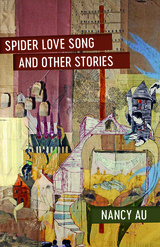 Spider Love Song and Other Stories
Nancy Au
Acre Books, 2019 Nancy Au’s debut collection is rich with scents, sounds, imaginative leaps, and unexpected angles of vision. These seventeen stories present the challenges facing characters whose inner and outer lives often do not align, whose spirits attempt flight despite dashed hopes and lean circumstances. Marginalized by race, age, and sexuality, they endeavor to create new worlds that honor their identities and their Chinese heritage.
Au excels at inhabiting the minds and hearts of children and the elderly. In the title story, Sophie Chu dresses daily in her increasingly shabby elephant costume to ensure her missing parents recognize her upon their return. In “The Unfed,” a village elder seeks to revive, with her dimming magic, a mountain community struck by tragedy. “Louise” follows, with deceptive hilarity (involving a one-eyed duck), the nuanced give and take between May Zhou and Lai, dissimilar yet passionate partners considering parenthood. The volume also offers sparkling speculative work that taps into the strength of nature—fox spirits and fire beetles, swollen rivers and rippling clouds—to showcase the sometimes surreal transformations of Au’s protagonists.
Spider Love Song and Other Stories treads the fault line that forms between lovers, families, friends, cultures—exposing injuries and vulnerabilities, but also the strength and courage necessary to recast resentment and anger into wonder and power. Au’s lyrical style, humor, and tender attention to her characters’ fancies and failings make this powerful debut a delight to read.
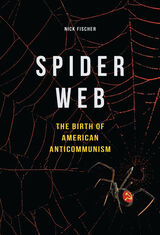 Spider Web: The Birth of American Anticommunism
Nick Fischer
University of Illinois Press, 2016 The McCarthy-era witch hunts marked the culmination of an anticommunist crusade launched after the First World War. With Bolshevism triumphant in Russia and public discontent shaking the United States, conservatives at every level of government and business created a network dedicated to sweeping away the "spider web" of radicalism they saw threatening the nation. In this groundbreaking study, Nick Fischer shines a light on right-wing activities during the interwar period. Conservatives, eager to dispel communism's appeal to the working class, railed against a supposed Soviet-directed conspiracy composed of socialists, trade unions, peace and civil liberties groups, feminists, liberals, aliens, and Jews. Their rhetoric and power made for devastating weapons in their systematic war for control of the country against progressive causes. But, as Fischer shows, the term spider web far more accurately described the anticommunist movement than it did the makeup and operations of international communism. Fischer details how anticommunist myths and propaganda influenced mainstream politics in America, and how its ongoing efforts paved the way for the McCarthyite Fifties--and augured the conservative backlash that would one day transform American politics.
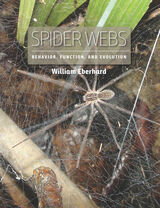 Spider Webs: Behavior, Function, and Evolution
William Eberhard
University of Chicago Press, 2020 In this lavishly illustrated, first-ever book on how spider webs are built, function, and evolved, William Eberhard provides a comprehensive overview of spider functional morphology and behavior related to web building, and of the surprising physical agility and mental abilities of orb weavers. For instance, one spider spins more than three precisely spaced, morphologically complex spiral attachments per second for up to fifteen minutes at a time. Spiders even adjust the mechanical properties of their famously strong silken lines to different parts of their webs and different environments, and make dramatic modifications in orb designs to adapt to available spaces. This extensive adaptive flexibility, involving decisions influenced by up to sixteen different cues, is unexpected in such small, supposedly simple animals.
As Eberhard reveals, the extraordinary diversity of webs includes ingenious solutions to gain access to prey in esoteric habitats, from blazing hot and shifting sand dunes (to capture ants) to the surfaces of tropical lakes (to capture water striders). Some webs are nets that are cast onto prey, while others form baskets into which the spider flicks prey. Some aerial webs are tramways used by spiders searching for chemical cues from their prey below, while others feature landing sites for flying insects and spiders where the spider then stalks its prey. In some webs, long trip lines are delicately sustained just above the ground by tiny rigid silk poles.
Stemming from the author’s more than five decades observing spider webs, this book will be the definitive reference for years to come.
Spider Woman Stories
G. M. Mullett
University of Arizona Press, 1979 "This is a fine introduction to Hopi mythology and values. It recreates an authentic poetic spirit and makes the reader eager to read more Hopi tales." —New Mexico Humanities Review
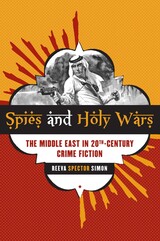 Spies and Holy Wars: The Middle East in 20th-Century Crime Fiction
By Reeva Spector Simon
University of Texas Press, 2010 Illuminating a powerful intersection between popular culture and global politics, Spies and Holy Wars draws on a sampling of more than eight hundred British and American thrillers that are propelled by the theme of jihad—an Islamic holy war or crusade against the West. Published over the past century, the books in this expansive study encompass spy novels and crime fiction, illustrating new connections between these genres and Western imperialism. Demonstrating the social implications of the popularity of such books, Reeva Spector Simon covers how the Middle Eastern villain evolved from being the malleable victim before World War II to the international, techno-savvy figure in today's crime novels. She explores the impact of James Bond, pulp fiction, and comic books and also analyzes the ways in which world events shaped the genre, particularly in recent years. Worldwide terrorism and economic domination prevail as the most common sources of narrative tension in these works, while military "tech novels" restored the prestige of the American hero in the wake of post-Vietnam skepticism. Moving beyond stereotypes, Simon examines the relationships between publishing trends, political trends, and popular culture at large—giving voice to the previously unexamined truths that emerge from these provocative page-turners.
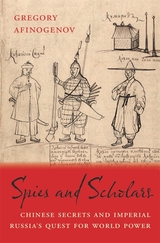 Spies and Scholars: Chinese Secrets and Imperial Russia’s Quest for World Power
Gregory Afinogenov
Harvard University Press, 2020 A Financial Times Best Book of the Year
The untold story of how Russian espionage in imperial China shaped the emergence of the Russian Empire as a global power.
From the seventeenth to the nineteenth century, the Russian Empire made concerted efforts to collect information about China. It bribed Chinese porcelain-makers to give up trade secrets, sent Buddhist monks to Mongolia on intelligence-gathering missions, and trained students at its Orthodox mission in Beijing to spy on their hosts. From diplomatic offices to guard posts on the Chinese frontier, Russians were producing knowledge everywhere, not only at elite institutions like the Academy of Sciences in St. Petersburg. But that information was secret, not destined for wide circulation.
Gregory Afinogenov distinguishes between the kinds of knowledge Russia sought over the years and argues that they changed with the shifting aims of the state and its perceived place in the world. In the seventeenth century, Russian bureaucrats were focused on China and the forbidding Siberian frontier. They relied more on spies, including Jesuit scholars stationed in China. In the early nineteenth century, the geopolitical challenge shifted to Europe: rivalry with Britain drove the Russians to stake their prestige on public-facing intellectual work, and knowledge of the East was embedded in the academy. None of these institutional configurations was especially effective in delivering strategic or commercial advantages. But various knowledge regimes did have their consequences. Knowledge filtered through Russian espionage and publication found its way to Europe, informing the encounter between China and Western empires.
Based on extensive archival research in Russia and beyond, Spies and Scholars breaks down long-accepted assumptions about the connection between knowledge regimes and imperial power and excavates an intellectual legacy largely neglected by historians.
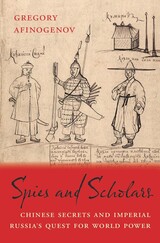 Spies and Scholars: Chinese Secrets and Imperial Russia’s Quest for World Power
Gregory Afinogenov
Harvard University Press A Financial Times Book of the Year
Gold Medal in World History, Independent Publisher Book Awards
“Superb…At once a history of science, of empire, and of espionage, the book traces the rise of the Russian empire as a putative rival to Qing dynasty China in the Far East. Afinogenov has chosen a genuinely compelling cast of characters to populate this story of imperial intrigue.”—New Rambler
“The history of Sino-Russian relations appears in a much-altered light thanks to Gregory Afinogenov’s impressive new book…It is a little-known story, and [he] tells it beautifully.”—Tony Barber, Financial Times
“Reads like a detective novel…a tour de force that offers new information about the rise of empires and the globalization of the world.”—Journal of Jesuit Studies
Beginning in the seventeenth century, Russian officials made a concerted effort to collect information about the Qing dynasty in China. From diplomatic missions in the Forbidden City to remote outposts on the border, Russian spies and scholars collected trade secrets, recipes for porcelain, and gossip about the country and its leaders—but the information was secret, not destined for wide circulation.
Focused at first on the Siberian frontier, tsarist bureaucrats relied on spies, some of whom were Jesuit scholars stationed in China. When their attention shifted to Europe in the nineteenth century, they turned to more public-facing means to generate knowledge, including diplomatic and academic worlds, which would ultimately inform the broader encounter between China and Western empires. Peopled with a colorful cast of characters and based on extensive archival research in Russia and beyond, Spies and Scholars is a dramatic tale of covert machinations that breaks down long-accepted assumptions about the connection between knowledge and imperial power.
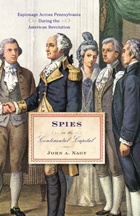 Spies in the Continental Capital: Espionage Across Pennsylvania During the American Revolution
John A. Nagy
Westholme Publishing, 2011 The Critical Role of British, French, and American Intelligence Operations in Colonial Pennsylvania
It did not take long after the Seven Years’ War—the French and Indian War in North America—for France to return spies to America in order to determine the likelihood of regaining the territory they lost to Britain. One of the key places of French espionage was the colony of Pennsylvania since its frontier had been an important crossroads of French influence in North America. The French recognized then that there was a real possibility that the colonies would seek their independence from Britain. Against this backdrop, award-winning historian John A. Nagy begins his investigation of espionage in colonial Pennsylvania. Philadelphia played a key role in the history of spying during the American Revolution because it was the main location for the Continental Congress, was occupied by the British Command, and then returned to Continental control. Philadelphia became a center of spies for the British and Americans—as well as double agents. George Washington was a firm believer in reliable military intelligence; after evacuating New York City, he neglected to have a spy network in place: when the British took over Philadelphia, he did not make the same mistake, and Washington was able to keep abreast of British troop strengths and intentions. Likewise, the British used the large Loyalist community around Philadelphia to assess the abilities of their Continental foes, as well as the resolve of Congress. In addition to describing techniques used by spies and specific events, such as the Major André episode, Nagy has scoured rare primary source documents to provide new and compelling information about some of the most notable agents of the war, such as Lydia Darragh, a celebrated American spy. An important contribution to Revolutionary War history, Spies in the Continental Capital: Espionage Across Pennsylvania During the American Revolution demonstrates that intelligence operations on both sides emanating from Pennsylvania were vast, well-designed, and critical to understanding the course and outcome of the war.
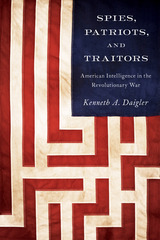 Spies, Patriots, and Traitors: American Intelligence in the Revolutionary War
Kenneth A. Daigler
Georgetown University Press, 2014 Students and enthusiasts of American history are familiar with the Revolutionary War spies Nathan Hale and Benedict Arnold, but few studies have closely examined the wider intelligence efforts that enabled the colonies to gain their independence. Spies, Patriots, and Traitors provides readers with a fascinating, well-documented, and highly readable account of American intelligence activities during the era of the Revolutionary War, from 1765 to 1783, while describing the intelligence sources and methods used and how our Founding Fathers learned and practiced their intelligence role. The author, a retired CIA officer, provides insights into these events from an intelligence professional’s perspective, highlighting the tradecraft of intelligence collection, counterintelligence, and covert actions and relating how many of the principles of the era’s intelligence practice are still relevant today. Kenneth A. Daigler reveals the intelligence activities of famous personalities such as Samuel Adams, George Washington, Benjamin Franklin, Nathan Hale, John Jay, and Benedict Arnold, as well as many less well-known figures. He examines the important role of intelligence in key theaters of military operations, such as Massachusetts, New York, New Jersey, Pennsylvania, and in General Nathanael Greene’s campaign in South Carolina; the role of African Americans in the era’s intelligence activities; undertakings of networks such as the Culper Ring; and intelligence efforts and paramilitary actions conducted abroad. Spies, Patriots, and Traitors adds a new dimension to our understanding of the American Revolution. The book’s scrutiny of the tradecraft and management of Revolutionary War intelligence activities will be of interest to students, scholars, intelligence professionals, and anyone who wants to learn more about this fascinating era of American history.
 Spies, Patriots, and Traitors: American Intelligence in the Revolutionary War
Kenneth A. Daigler
Georgetown University Press Students and enthusiasts of American history are familiar with the Revolutionary War spies Nathan Hale and Benedict Arnold, but few studies have closely examined the wider intelligence efforts that enabled the colonies to gain their independence. Spies, Patriots, and Traitors provides readers with a fascinating, well-documented, and highly readable account of American intelligence activities during the era of the Revolutionary War, from 1765 to 1783, while describing the intelligence sources and methods used and how our Founding Fathers learned and practiced their intelligence role. The author, a retired CIA officer, provides insights into these events from an intelligence professional’s perspective, highlighting the tradecraft of intelligence collection, counterintelligence, and covert actions and relating how many of the principles of the era’s intelligence practice are still relevant today. Kenneth A. Daigler reveals the intelligence activities of famous personalities such as Samuel Adams, George Washington, Benjamin Franklin, Nathan Hale, John Jay, and Benedict Arnold, as well as many less well-known figures. He examines the important role of intelligence in key theaters of military operations, such as Massachusetts, New York, New Jersey, Pennsylvania, and in General Nathanael Greene’s campaign in South Carolina; the role of African Americans in the era’s intelligence activities; undertakings of networks such as the Culper Ring; and intelligence efforts and paramilitary actions conducted abroad. Spies, Patriots, and Traitors adds a new dimension to our understanding of the American Revolution. The book’s scrutiny of the tradecraft and management of Revolutionary War intelligence activities will be of interest to students, scholars, intelligence professionals, and anyone who wants to learn more about this fascinating era of American history.
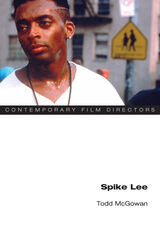 Spike Lee
Tom McGowan
University of Illinois Press, 2014 Since the release of Do the Right Thing in 1989, Spike Lee has established himself as a cinematic icon. Lee's mostly independent films garner popular audiences while at the same time engaging in substantial political and social commentary. He is arguably the most accomplished African American filmmaker in cinematic history, and his breakthrough paved the way for the success of many other African Americans in film. In this first single-author scholarly examination of Spike Lee's oeuvre, Todd McGowan shows how Lee's films, from She's Gotta Have It through Red Hook Summer, address crucial social issues such as racism, paranoia, and economic exploitation in a formally inventive manner. McGowan argues that Lee uses excess in his films to intervene in issues of philosophy, politics, and art. McGowan contends that it is impossible to watch a Spike Lee film in the way that one watches a typical Hollywood film. By forcing observers to recognize their unconscious enjoyment of violence, paranoia, racism, sexism, and oppression, Lee's films prod spectators to see differently and to confront their own excess. In the process, his films reveal what is at stake in desire, interpersonal relations, work, and artistic creation itself.
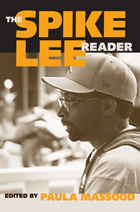 The Spike Lee Reader
Paula Massood
Temple University Press, 2007 From his stunning debut, She's Gotta Have It, to his incendiary Do the Right Thing, through Jungle Fever, Bamboozled, and even Inside Man, Spike Lee has found loyal fans and fervid detractors, as well as critical praise, if not always box office success. Lee's films have sparked critical inquiries into the nature of genres, the role of the auteur, and the question of whether there is, in fact, a black cinematic aesthetic. According to some critics, Lee's films challenge viewers to engage intellectually with a cinematic "text," to revel in and deconstruct the complexities of each film's polyphonic visual and aural fields.
Gathered in this anthology are critical writings on Spike Lee's films by leading scholars in the fields of cinema studies and African American studies. In sixteen new and reprinted essays, the contributors to The Spike Lee Reader consider the nexus of race, gender, and sexuality in Lee's work, and in so doing encourage readers to further explore the cultural, social, and political implications of Lee's films as well as his entire body of work.
Contributors include: Christine Acham, Toni Cade Bambara, Mark D. Cunningham, Anna Everett, Daniel Flory, Krin Gabbard, David A. Gerstner, Ed Guerrero, Keith M. Harris, bell hooks, Wahneema Lubiano, James C. McKelly, Tavia Nyong'o, Beretta E. Smith-Shomade, Michele Wallace, S. Craig Watkins, and the editor.
Spike, Mike, Slackers & Dykes: A Guided Tour across a Decade of American Independent Cinema
By John Pierson
University of Texas Press, 2014 #66, The 100 Greatest Film Books of All Time, The Hollywood Reporter
The legendary figure who launched the careers of Spike Lee, Michael Moore, and Richard Linklater offers a no-holds-barred look at the deals and details that propel an indie film from a dream to distribution.
Pierson, a producer’s representative, explains how he has helped filmmakers with no profile at the time to get their work made, sold and seen by the world, sharing stories about Lee’s She’s Gotta Have It, Moore’s Roger & Me and Linklater’s Slackers, plus Hoop Dreams, Clerks and many others. Chats with Kevin Smith serve as interstitials between chapters.
 Spill
Bruce Smith
University of Chicago Press, 2018 “There are two schools: one that sings the sheen and hues, the necessary pigments and frankincense while the world dries and the other voice like water that seeks to saturate, erode, and boil . . . It ruins everything you have ever saved.”
Spill is a book in contradictions, embodying helplessness in the face of our dual citizenship in the realms of trauma and gratitude, artistic aspiration and political reality. The centerpiece of this collection is a lyrical essay that recalls the poet’s time working at the Federal Penitentiary at Lewisburg in the 1960s. Mentored by the insouciant inmate S, the speaker receives a schooling in race, class, and culture, as well as the beginning of an apprenticeship in poetry. As he and S consult the I Ching, the Book of Changes, the speaker becomes cognizant of other frequencies, other identities; poetry, divination, and a synchronous, alternative reading of life come into focus. On either side of this prose poem are related poems of excess and witness, of the ransacked places and of new territories that emerge from the monstrous. Throughout, these poems inhabit rather than resolve their contradictions, their utterances held in tension “between the hemispheres of songbirds and the hemispheres of men.”
Spill: Scenes of Black Feminist Fugitivity
Alexis Pauline Gumbs
Duke University Press, 2016 In Spill, self-described queer Black troublemaker and Black feminist love evangelist Alexis Pauline Gumbs presents a commanding collection of scenes depicting fugitive Black women and girls seeking freedom from gendered violence and racism. In this poetic work inspired by Hortense Spillers, Gumbs offers an alternative approach to Black feminist literary criticism, historiography, and the interactive practice of relating to the words of Black feminist thinkers. Gumbs not only speaks to the spiritual, bodily, and otherworldly experience of Black women but also allows readers to imagine new possibilities for poetry as a portal for understanding and deepening feminist theory.
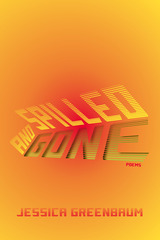 Spilled and Gone: Poems
Jessica Greenbaum
University of Pittsburgh Press, 2019 Spilled and Gone, Jessica Greenbaum's third collection marries the world through metaphor so that a serrated knife on its back is as harmless as "the ocean on a shiny day," and two crossed daisies in Emily Dickinson's herbarium "might double as the logo /for a roving band of pacifists."
At heart, the poems themselves seek peace through close observation's associative power to reveal cohering relationships and meaning within the 21st century-and during its dark turn. In the everyday tally of "the good against the violence" the speaker asks, "why can't the line around the block on the free night/ at the museum stand for everything, why can't the shriek /of the girls in summer waves . . . / be the call and response of all people living on the earth?" A descendant of the New York school and the second wave, Greenbaum "spills" details that she simultaneously replaces-through the spiraling revelations only poems with an authentic life-force of humanism can nurture.
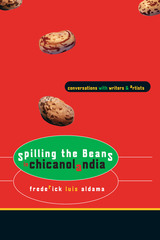 Spilling the Beans in Chicanolandia: Conversations with Writers and Artists
By Frederick Luis Aldama
University of Texas Press, 2006 Since the 1980s, a prolific "second wave" of Chicano/a writers and artists has tremendously expanded the range of genres and subject matter in Chicano/a literature and art. Building on the pioneering work of their predecessors, whose artistic creations were often tied to political activism and the civil rights struggle, today's Chicano/a writers and artists feel free to focus as much on the aesthetic quality of their work as on its social content. They use novels, short stories, poetry, drama, documentary films, and comic books to shape the raw materials of life into art objects that cause us to participate empathetically in an increasingly complex Chicano/a identity and experience. This book presents far-ranging interviews with twenty-one "second wave" Chicano/a poets, fiction writers, dramatists, documentary filmmakers, and playwrights. Some are mainstream, widely recognized creators, while others work from the margins because of their sexual orientations or their controversial positions. Frederick Luis Aldama draws out the artists and authors on both the aesthetic and the sociopolitical concerns that animate their work. Their conversations delve into such areas as how the artists' or writers' life experiences have molded their work, why they choose to work in certain genres and how they have transformed them, what it means to be Chicano/a in today's pluralistic society, and how Chicano/a identity influences and is influenced by contact with ethnic and racial identities from around the world.
Spillover from the Conflict in Syria: An Assessment of the Factors that Aid and Impede the Spread of Violence
William Young
RAND Corporation, 2014 Aid flowing into Syria is intended to determine the outcome of the conflict between rebel factions and Damascus. Instead, it could perpetuate the civil war and ignite larger regional hostilities that could reshape the political geography of the Middle East. This report examines the main factors likely to contribute to or impede the spread of violence from civil war and insurgency in Syria, and then examines how they apply to neighboring states.
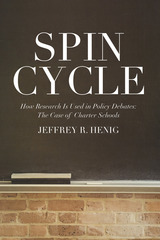 Spin Cycle: How Research Gets Used in Policy Debates--The Case of Charter Schools
Jeffrey R. Henig
Russell Sage Foundation, 2008 One important aim of social science research is to provide unbiased information that can help guide public policies. However, social science is often construed as politics by other means. Nowhere is the polarized nature of social science research more visible than in the heated debate over charter schools. In Spin Cycle, noted political scientist and education expert Jeffrey Henig explores how controversies over the charter school movement illustrate the use and misuse of research in policy debates. Henig's compelling narrative reveals that, despite all of the political maneuvering on the public stage, research on school choice has gradually converged on a number of widely accepted findings. This quiet consensus shows how solid research can supersede partisan cleavages and sensationalized media headlines. In Spin Cycle, Henig draws on extensive interviews with researchers, journalists, and funding agencies on both sides of the debate, as well as data on federal and foundation grants and a close analysis of media coverage, to explore how social science research is "spun" in the public sphere. Henig looks at the consequences of a highly controversial New York Times article that cited evidence of poor test performance among charter school students. The front-page story, based on research findings released by the American Federation of Teachers (AFT), sparked an explosive debate over the effectiveness of charter schools. In the ensuing drama, reputable scholars from both ends of the political spectrum launched charges and counter-charges over the research methodology and the implications of the data. Henig uses this political tug-of-war to illustrate broader problems relating to social science: of what relevance is supposedly non-partisan research when findings are wielded as political weapons on both sides of the debate? In the case of charter schools, Henig shows that despite the political posturing in public forums, many researchers have since revised their stances according to accumulating new evidence and have begun to find common ground. Over time, those who favored charter schools were willing to admit that in many instances charter schools are no better than traditional schools. And many who were initially alarmed by the potentially destructive consequences of school choice admitted that their fears were overblown. The core problem, Henig concludes, has less to do with research itself than with the way it is often sensationalized or misrepresented in public discourse. Despite considerable frustration over the politicization of research, until now there has been no systematic analysis of the problem. Spin Cycle provides an engaging narrative and instructive guide with far-reaching implications for the way research is presented to the public. Ultimately, Henig argues, we can do a better job of bringing research to bear on the task of social betterment.
 Spinal Cord Injury and the Family: A New Guide
Michelle J. Alpert M.D.
Harvard University Press, 2008 Spinal cord injury, or SCI, is frequently sudden and unexpected—through accident, disease, or violence, patients temporarily lose control of their bodies and, it seems, their lives. With rehabilitation, they can learn to navigate their world once more, retraining muscles and mind to compensate for paralyzed limbs and diminished strength. But as Dr. Michelle Alpert shows here, there is far more to recapturing full, independent lives than regaining movement. Central to long-term success is mending the family unit.
Combining Dr. Alpert’s clinical experience with patients’ own stories, Spinal Cord Injury and the Family is for individuals and their families who must climb back from injury: for the young quad couple, both quadriplegic, who wish to conceive and raise a child; for the paraplegic dad who wants to teach his daughter to drive; for the couple wondering how they can regain the sexual spark in their relationship.
The authors cover the causes of and prognosis for SCI through case studies, review common courses of rehabilitation, and answer the “what now?” questions—from daily routines to larger issues concerning sex, education and employment, childbearing, and parenting with SCI. Rich in clinical information and practical advice, the book shows how real patients and their families are living full lives after spinal cord injury.
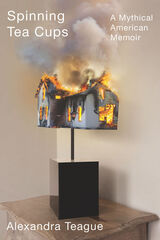 Spinning Tea Cups: A Mythical American Memoir
Alexandra Teague
Oregon State University Press, 2023 In these quirky and richly told tales, Alexandra Teague brings readers along for the wild ride of her youth, traversing wide swaths of the American landscape in the company of a talking puppet, Victorian ghosts, and a family fueled by fantasy, dysfunction, and fierce love.
How did people who prided themselves on making everything from scratch manage to afford annual trips to Disney World? Did her mother really have psychic abilities? Why did her sensitive youngest nephew speak in a voice that wasn’t his own? How do family legacies of grief and dysfunction and creativity intersect? How can she escape her circumstances without replicating the escapist fantasies with which she was raised?
Teague attempts to understand and contextualize her family in terms of trauma and mental health, but also with deep love and humor. Carefully attuned to the vagaries of geographical cultures, she weaves her family’s history with explorations of pop culture and the specific cultures of the places she and her family pass through: a Texas city, an Victorian tourist town in Arkansas, a Southwest ghost town, Central Florida, the Bay Area, Kansas City, and a college town in the Inland Northwest.
Spinning Tea Cups will appeal to readers interested in American cultural studies, those concerned with the ongoing crisis of mental illness in this country, and anyone seeking to explore the dangerous and recuperative powers of fantasy.
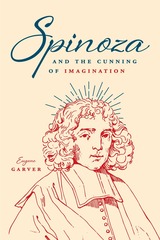 Spinoza and the Cunning of Imagination
Eugene Garver
University of Chicago Press, 2018 Spinoza’s Ethics, and its project of proving ethical truths through the geometric method, have attracted and challenged readers for more than three hundred years. In Spinoza and the Cunning of Imagination, Eugene Garver uses the imagination as a guiding thread to this work. Other readers have looked at the imagination to account for Spinoza’s understanding of politics and religion, but this is the first inquiry to see it as central to the Ethics as a whole—imagination as a quality to be cultivated, and not simply overcome.
Spinoza initially presents imagination as an inadequate and confused way of thinking, always inferior to ideas that adequately represent things as they are. It would seem to follow that one ought to purge the mind of imaginative ideas and replace them with rational ideas as soon as possible, but as Garver shows, the Ethics don’t allow for this ultimate ethical act until one has cultivated a powerful imagination. This is, for Garver, “the cunning of imagination.” The simple plot of progress becomes, because of the imagination, a complex journey full of reversals and discoveries. For Garver, the “cunning” of the imagination resides in our ability to use imagination to rise above it.
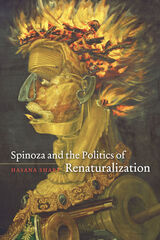 Spinoza and the Politics of Renaturalization
Hasana Sharp
University of Chicago Press, 2011 There have been many Spinozas over the centuries: atheist, romantic pantheist, great thinker of the multitude, advocate of the liberated individual, and rigorous rationalist. The common thread connecting all of these clashing perspectives is Spinoza’s naturalism, the idea that humanity is part of nature, not above it. In this sophisticated new interpretation of Spinoza’s iconoclastic philosophy, Hasana Sharp draws on his uncompromising naturalism to rethink human agency, ethics, and political practice. Sharp uses Spinoza to outline a practical wisdom of “renaturalization,” showing how ideas, actions, and institutions are never merely products of human intention or design, but outcomes of the complex relationships among natural forces beyond our control. This lack of a metaphysical or moral division between humanity and the rest of nature, Sharp contends, can provide the basis for an ethical and political practice free from the tendency to view ourselves as either gods or beasts. Sharp’s groundbreaking argument critically engages with important contemporary thinkers—including deep ecologists, feminists, and race and critical theorists—making Spinoza and the Politics of Renaturalization vital for a wide range of scholars.
Spinoza in Her Youth
Norma Cole
Omnidawn, 2002 Norma Cole's rich and rigorous poems delight in and disrupt the framing structures of language, memory, history, so as to inhabit new fluencies of possibility. Informed by a diversity of subject matter (including emotional, political, philosophic), each poem finds its balance of form and content upon the knifepoint of a lyric integrity that is as responsive to the gravity of experience as it is to the fallibility of our means of representing it.
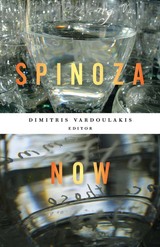 Spinoza Now
Dimitris Vardoulakis
University of Minnesota Press, 2010 What does it mean to think about, and with, Spinoza today? This collection, the first broadly interdisciplinary volume dealing with Spinozan thought, asserts the importance of Spinoza’s philosophy of immanence for contemporary cultural and philosophical debates.
Engaging with Spinoza’s insistence on the centrality of the passions as the site of the creative and productive forces shaping society, this collection critiques the impulse to transcendence and regimes of mastery, exposing universal values as illusory. Spinoza Now pursues Spinoza’s challenge to abandon the temptation to think through the prism of death in order to arrive at a truly liberatory notion of freedom. In this bold endeavor, the essays gathered here extend the Spinozan project beyond the disciplinary boundaries of philosophy to encompass all forms of life-affirming activity, including the arts and literature. The essays, taken together, suggest that “Spinoza now” is not so much a statement about a “truth” that Spinoza’s writings can reveal to us in our present situation. It is, rather, the injunction to adhere to the attitude that affirms both necessity and impossibility.
Contributors: Alain Badou, École Normale Supérieure; Mieke Bal, Amsterdam School for Cultural Analysis; Cesare Casarino, U of Minnesota; Justin Clemens, U of Melbourne; Simon Duffy, U of Sydney; Sebastian Egenhofer, U of Basel; Alexander García Düttmann, Goldsmiths, U of London; Arthur Jacobson, Yeshiva U; A. Kiarina Kordela, Macalester College; Michael Mack, U of Nottingham; Warren Montag, Occidental College; Antonio Negri; Christopher Norris, U of Cardiff, Wales; Anthony Uhlmann, U of Western Sydney.
 Spinoza’s Challenge to Jewish Thought: Writings on His Life, Philosophy, and Legacy
Edited by Daniel B. Schwartz
Brandeis University Press, 2019 Arguably, no historical thinker has had as varied and fractious a reception within modern Judaism as Baruch (Benedict) Spinoza (1632–77), the seventeenth-century philosopher, pioneering biblical critic, and Jewish heretic from Amsterdam. Revered in many circles as the patron saint of secular Jewishness, he has also been branded as the worst traitor to the Jewish people in modern times. Jewish philosophy has cast Spinoza as marking a turning point between the old and the new, as a radicalizer of the medieval tradition and table setter for the modern. He has served as a perennial landmark and point of reference in the construction of modern Jewish identity. This volume brings together excerpts from central works in the Jewish response to Spinoza. True to the diversity of Spinoza’s Jewish reception, it features a mix of genres, from philosophical criticism to historical fiction, from tributes to diary entries, providing the reader with a sense of the overall historical development of Spinoza’s posthumous legacy.
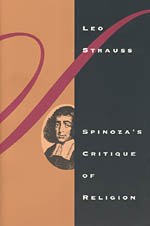 Spinoza's Critique of Religion
Leo Strauss
University of Chicago Press, 1965 Leo Strauss articulates the conflict between reason and revelation as he explores Spinoza's scientific, comparative, and textual treatment of the Bible. Strauss compares Spinoza's Theologico-political Treatise and the Epistles, showing their relation to critical controversy on religion from Epicurus and Lucretius through Uriel da Costa and Isaac Peyrere to Thomas Hobbes.
Strauss's autobiographical Preface, traces his dilemmas as a young liberal intellectual in Germany during the Weimar Republic, as a scholar in exile, and as a leader of American philosophical thought.
"[For] those interested in Strauss the political philosopher, and also those who doubt whether we have achieved the 'final solution' in respect to either the character of political science or the problem of the relation of religion to the state." —Journal of Politics
"A substantial contribution to the thinking of all those interested in the ageless problems of faith, revelation, and reason." —Kirkus Reviews
Leo Strauss (1899-1973) was the Robert Maynard Hutchins Distinguished Service Professor Emeritus of political science at the University of Chicago. His contributions to political science include The Political Philosophy of Hobbes, The City and the Man, What is Political Philosophy?, and Liberalism Ancient and Modern.
Spinoza's Modernity: Mendelssohn, Lessing, and Heine
Willi Goetschel
University of Wisconsin Press, 2004 Spinoza’s Modernity is a major, original work of intellectual history that reassesses the philosophical project of Baruch Spinoza, uncovers his influence on later thinkers, and demonstrates how that crucial influence on Moses Mendelssohn, G. E. Lessing, and Heinrich Heine shaped the development of modern critical thought. Excommunicated by his Jewish community, Spinoza was a controversial figure in his lifetime and for centuries afterward. Willi Goetschel shows how Spinoza’s philosophy was a direct challenge to the theological and metaphysical assumptions of modern European thought. He locates the driving force of this challenge in Spinoza’s Jewishness, which is deeply inscribed in his philosophy and defines the radical nature of his modernity.
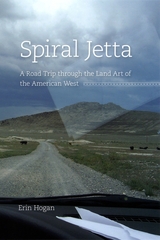 Spiral Jetta: A Road Trip through the Land Art of the American West
Erin Hogan
University of Chicago Press, 2008 Erin Hogan hit the road in her Volkswagen Jetta and headed west from Chicago in search of the monuments of American land art: a salty coil of rocks, four hundred stainless steel poles, a gash in a mesa, four concrete tubes, and military sheds filled with cubes. Her journey took her through the states of Utah, Nevada, New Mexico, Arizona, and Texas. It also took her through the states of anxiety, drunkenness, disorientation, and heat exhaustion. Spiral Jetta is a chronicle of this journey. A lapsed art historian and devoted urbanite, Hogan initially sought firsthand experience of the monumental earthworks of the 1970s and the 1980s—Robert Smithson’s Spiral Jetty, Nancy Holt’s Sun Tunnels, Walter De Maria’s Lightning Field, James Turrell’s Roden Crater, Michael Heizer’s Double Negative, and the contemporary art mecca of Marfa, Texas. Armed with spotty directions, no compass, and less-than-desert-appropriate clothing, she found most of what she was looking for and then some. “I was never quite sure what Hogan was looking for when she set out . . . or indeed whether she found it. But I loved the ride. In Spiral Jetta, an unashamedly honest, slyly uproarious, ever-probing book, art doesn’t magically have the power to change lives, but it can, perhaps no less powerfully, change ways of seeing.”—Tom Vanderbilt, New York Times Book Review “The reader emerges enlightened and even delighted. . . . Casually scrutinizing the artistic works . . . while gamely playing up her fish-out-of-water status, Hogan delivers an ingeniously engaging travelogue-cum-art history.”—Atlantic “Smart and unexpectedly hilarious.”—Kevin Nance, Chicago Sun-Times “One of the funniest and most entertaining road trips to be published in quite some time.”—June Sawyers, Chicago Tribune “Hogan ruminates on how the work affects our sense of time, space, size, and scale. She is at her best when she reexamines the precepts of modernism in the changing light of New Mexico, and shows how the human body is meant to be a participant in these grand constructions.”—New Yorker
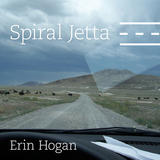 Spiral Jetta: A Road Trip through the Land Art of the American West
Erin Hogan
University of Chicago Press, 2008 Erin Hogan hit the road in her Volkswagen Jetta and headed west from Chicago in search of the monuments of American land art: a salty coil of rocks, four hundred stainless steel poles, a gash in a mesa, four concrete tubes, and military sheds filled with cubes. Her journey took her through the states of Utah, Nevada, New Mexico, Arizona, and Texas. It also took her through the states of anxiety, drunkenness, disorientation, and heat exhaustion. Spiral Jetta is a chronicle of this journey. A lapsed art historian and devoted urbanite, Hogan initially sought firsthand experience of the monumental earthworks of the 1970s and the 1980s—Robert Smithson’s Spiral Jetty, Nancy Holt’s Sun Tunnels, Walter De Maria’s Lightning Field, James Turrell’s Roden Crater, Michael Heizer’s Double Negative, and the contemporary art mecca of Marfa, Texas. Armed with spotty directions, no compass, and less-than-desert-appropriate clothing, she found most of what she was looking for and then some. “I was never quite sure what Hogan was looking for when she set out . . . or indeed whether she found it. But I loved the ride. In Spiral Jetta, an unashamedly honest, slyly uproarious, ever-probing book, art doesn’t magically have the power to change lives, but it can, perhaps no less powerfully, change ways of seeing.”—Tom Vanderbilt, New York Times Book Review “The reader emerges enlightened and even delighted. . . . Casually scrutinizing the artistic works . . . while gamely playing up her fish-out-of-water status, Hogan delivers an ingeniously engaging travelogue-cum-art history.”—Atlantic “Smart and unexpectedly hilarious.”—Kevin Nance, Chicago Sun-Times “One of the funniest and most entertaining road trips to be published in quite some time.”—June Sawyers, Chicago Tribune “Hogan ruminates on how the work affects our sense of time, space, size, and scale. She is at her best when she reexamines the precepts of modernism in the changing light of New Mexico, and shows how the human body is meant to be a participant in these grand constructions.”—New Yorker
Spiral Jetta Summer: Swimming in the Great Salt Lake
Erin Hogan
University of Chicago Press, 2008 Erin Hogan hit the road in her Volkswagen Jetta and headed west from Chicago in search of the monuments of American land art: a salty coil of rocks, four hundred stainless steel poles, a gash in a mesa, four concrete tubes, and military sheds filled with cubes. Her completed journey took her through the states of Utah, Nevada, New Mexico, Arizona, and Texas. It also took her through the states of anxiety, drunkenness, disorientation, and heat exhaustion. Spiral Jetta Summer is a chronicle of this adventure, and it reveals Hogan’s unpretentious and boisterous narrative flair on the roads of middle-of-nowhere Utah in pursuit of Robert Smithson’s classic work Spiral Jetty. Along the way, Hogan writes about venturing outside of her urban comfort zone; who she encounters; and most importantly, how she found most of what she was looking for and then some.
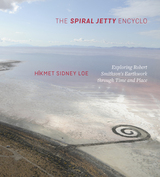 The Spiral Jetty Encyclo: Exploring Robert Smithson's Earthwork through Time and Place
Hikmet Sidney Loe
University of Utah Press, 2017 Copublished with the Tanner Trust Fund, J. Willard Marriott Library.
Robert Smithson’s earthwork, Spiral Jetty (1970), an icon of the Land Art movement of the 1960s and 1970s, is located on the northern shores of Utah’s Great Salt Lake. Smithson built a masterpiece from local materials, one that spirals counterclockwise into the lake and appears or is submerged with fluctuations in the lake’s locally red, saline water. The Spiral Jetty Encyclo draws on Smithson’s writings for encyclopedic entries that bring to light the context of the earthwork and Smithson’s many points of reference in creating it. Visitors and armchair travelers, too, will discover how much significance Smithson placed on regional considerations, his immersion in natural history, his passion for travel, and his ability to use diverse mediums to create a cohesive and lasting work of art. Containing some 220 images, most of them in color, with some historical black and whites, The Spiral Jetty Encyclo lets readers explore the construction, connections, and significance of Smithson’s 1,500-foot-long curl into Great Salt Lake, created, in Smithson’s words, of “mud, salt crystals, rocks, water.”
Winner of 15 Bytes Book Award for Art Book.
Finalist for the Utah State Historical Society Best Book Award.
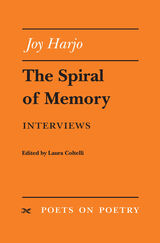 The Spiral of Memory: Interviews
Joy Harjo
University of Michigan Press, 1995 With the recently-published The Woman Who Fell from the Sky, Joy Harjo has emerged as one of the most powerful Native American voices of her generation. Over the past two decades, Harjo has refined and perfected a unique poetic voice that speaks her multifaceted experience as Native American, woman and Westerner in twentieth-century society.
The Spiral of Memory gathers the conversations in which Harjo has articulated her singular yet universal perspective on the world and her poetry. She reflects upon the nuances and development of her art, the importance of her origins, the arduous reconstruction of the tribal past, the dramatic confrontation between Native American and Anglo civilizations, the existential and artistic itinerary through present-day America, and other provocative and profoundly human themes.
Joy Harjo is the author of several volumes of poetry. She received awards from the National Endowment for the Arts, the Before Columbus Foundation, and the Poetry Society of America. She is Professor of English, University of New Mexico, Albuquerque. Laura Coltelli is Associate Professor of American Literature, University of Pisa.
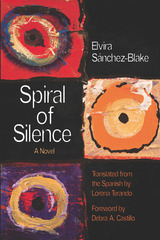 Spiral of Silence: A Novel
Elvira Sánchez-Blake; Translated from the Spanish by Lorena Terando; Foreword by Debra A. Castillo
Northwestern University Press, 2019 Elvira Sánchez-Blake's shattering testimonial novel, Spiral of Silence, breaks thirty-year silences about the traumatizing impact of Colombia's civil war, and centers on the experiences of women who move through hopelessness, loss, and grief during this volatile era in Latin American history.
A multigenerational epic, Spiral of Silence (Espiral de Silencios) opens in the early 1980s, as peace and amnesty agreements spark optimism and hope. We meet Norma, a privileged, upper-class woman who is married to an army general; Maria Teresa (Mariate), a young rebel who loves a guerrilla fighter and navigates commitments to motherhood and revolutionary activism; and Amparo, a woman who comes of age later, and carries the confusion and dislocation of a younger generation. Each contends with the consequences of war and violence on her life; each is empowered through community-building and working for change.
Few authors have considered the role of women in Colombia during this wartime period, and Sánchez-Blake's nuanced exploration of gender and sexism—framed by conflict and social upheaval—distinguishes the novel. Drawing on stories from women who have worked within organizations in Colombia to end state violence, Spiral of Silence celebrates resistance, reinvention, and how women create and protect their families and communities.
The Spiral of Silence: Public Opinion--Our Social Skin
Elisabeth Noelle-Neumann
University of Chicago Press, 1993 In this groundbreaking work, Elisabeth Noelle-Neumann examines public opinion as a form of social control in which individuals, almost instinctively sensing the opinions of those around them, shape their behavior to prevailing attitudes about what is acceptable.
For this second edition, Noelle-Neumann has added three new chapters: the first discusses new discoveries in the history of public opinion; the second continues the author's efforts to construct a comprehensive theory of public opinion, addressing criticisms and defenses of her "spiral of silence" theory that have appeared since 1980; the third offers a concise and updated summary of the book's arguments.
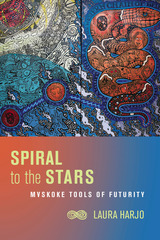 Spiral to the Stars: Mvskoke Tools of Futurity
Laura Harjo
University of Arizona Press, 2019 All communities are teeming with energy, spirit, and knowledge, and Spiral to the Stars taps into and activates this dynamism to discuss Indigenous community planning from a Mvskoke perspective. This book poses questions about what community is, how to reclaim community, and how to embark on the process of envisioning what and where the community can be.
Geographer Laura Harjo demonstrates that Mvskoke communities have what they need to dream, imagine, speculate, and activate the wishes of ancestors, contemporary kin, and future relatives—all in a present temporality—which is Indigenous futurity.
Organized around four methodologies—radical sovereignty, community knowledge, collective power, and emergence geographies—Spiral to the Stars provides a path that departs from traditional community-making strategies, which are often extensions of the settler state. Readers are provided a set of methodologies to build genuine community relationships, knowledge, power, and spaces for themselves. Communities don’t have to wait on experts because this book helps them activate their own possibilities and expertise. A detailed final chapter provides participatory tools that can be used in workshop settings or one on one.
This book offers a critical and concrete map for community making that leverages Indigenous way-finding tools. Mvskoke narratives thread throughout the text, vividly demonstrating that theories come from lived and felt experiences. This is a must-have book for community organizers, radical pedagogists, and anyone wishing to empower and advocate for their community.
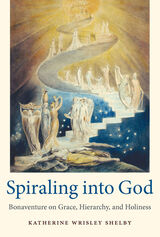 Spiraling Into God: Bonaventure on Grace, Hierarchy , and Holiness
Katherine Wrisley Shelby
Catholic University of America Press, 2023 Spiraling into God: Bonaventure on Grace, Hierarchy, and Holiness offers a systematic account of the Seraphic Doctor’s doctrine of grace across his speculative-academic, mystical, hagiographical, and pastoral texts. It does so by arguing that an account of this kind can only be provided by also attending to his theology of hierarchy, a methodology derived from Bonaventure’s claim in the Major Legend of St. Francis that Francis of Assisi was a “vir hierarchicus,” or hierarchical man. As the book explores in great depth, this appellation relies upon Bonaventure’s reading of a Victorine Dionysian interpreter by the name of Thomas Gallus, whose “angelic anthropology”—or notion of the hierarchical soul—becomes a crucial component within the Seraphic Doctor’s teaching on grace as he interprets the sanctity of St. Francis. Throughout the course of his career, Bonvaenture will define sanctifying grace as a created “inflowing” (influentia) that “hierarchizes” human beings by purifying, illuminating, and perfecting them from within, thus causing them to become a similitude of the Trinity. This book explains what this means and why it matters.
Most existing scholarship on this subject in Bonaventure’s thought interprets it as a subtopic with respect to other themes—for example, with respect to his Christology or his Trinitarian theology—rather than taking the time to understand his doctrine of grace in its own right. Alternatively, scholarly treatments of his doctrine of grace will treat it at length, but will only examine the topic as it appears in his more speculative-academic texts—most especially his Commentary on the Sentences or his famous Itinerarium Mentis in Deum—without bringing these into conversation with his pastoral works, sermon literature, or hagiographical texts. This book provides the first unified treatment of Bonaventure’s doctrine of grace across all these different genres of his known corpus, and in so doing, fills a massive lacuna in both Bonaventurean scholarship and in the field of medieval historical theology.
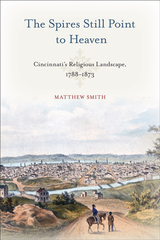 The Spires Still Point to Heaven: Cincinnati's Religious Landscape, 1788–1873
Matthew Smith
Temple University Press, 2023 A case study about the formation of American pluralism and religious liberty, The Spires Still Point to Heaven explores why—and more importantly how—the early growth of Cincinnati influenced the changing face of the United States. Matthew Smith deftly chronicles the urban history of this thriving metropolis in the mid-nineteenth century. As Protestants and Catholics competed, building rival domestic missionary enterprises, increased religious reform and expression shaped the city. In addition, the different ethnic and religious beliefs informed debates on race, slavery, and immigration, as well as disease, temperance reform, and education. Specifically, Smith explores the Ohio Valley’s religious landscape from 1788 through the nineteenth century, examining its appeal to evangelical preachers, abolitionists, social critics, and rabbis. He traces how Cincinnati became a battleground for newly energized social reforms following a cholera epidemic, and how grassroots political organizing was often tied to religious issues. He also illustrates the anti-immigrant sentiments and anti-Catholic nativism pervasive in this era. The first monograph on Cincinnati’s religious landscape before the Civil War, The Spires Still Point to Heaven highlights Cincinnati’s unique circumstances and how they are key to understanding the cultural and religious development of the nation.
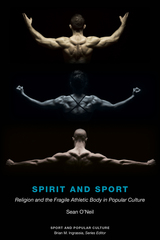 Spirit and Sport: Religion and the Fragile Athletic Body in Popular Culture
Sean Samuel O'Neil
University of Tennessee Press, 2022 In Spirit and Sport: Religion and the Fragile Athletic Body in Popular Culture, Sean O’Neil studies the intersectionality of religion and disability as it exists within contemporary sports. To do so, he calls to the forefront various contemporary stories about trauma and disability—some fictional, others biographical—and examines how we tell and interpret these stories within the frameworks of athletic activity, competition, failure, and success. O’Neil studies a wide range of perspectives, from John Irving’s A Prayer for Owen Meany and the big-screen’s Signs to the experiences of real-life athletes like Tim Tebow, Muhammad Ali, and Bethany Hamilton. Woven throughout his examination of each is a consideration of religious belief and practice, especially within Christianity, as it relates to athletic ability—the lighthearted stories of victory and overcoming, the inspiring triumph over fragility and limitation so often couched in religious terms.
O’Neil’s study draws upon his experiences as a hospital chaplain and his own battle with skin cancer. By blending personal experience with sociological observation, O’Neil argues that the intersection of religion, sports, and disability in popular culture is a revealing site of cultural struggle over competing myths, identities, and values related to the body—both the physical bodies we inhabit as well as the broader social bodies to which we subscribe.
Spirit and Sport is a study with broad appeal: from O’Neil’s autoethnographic storytelling to the wide range of narrative media he examines, religious scholars, sports historians, and general audiences alike are sure to find it a thought-provoking and engaging read.
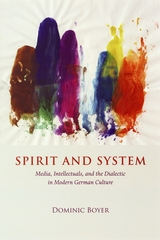 Spirit and System: Media, Intellectuals, and the Dialectic in Modern German Culture
Dominic Boyer
University of Chicago Press, 2005 Combining ethnography, history, and social theory, Dominic Boyer's Spirit and System exposes how the shifting fortunes and social perceptions of German intellectuals in the nineteenth and twentieth centuries influenced Germans' conceptions of modernity and national culture.
Boyer analyzes the creation and mediation of the social knowledge of "German-ness" from nineteenth-century university culture and its philosophies of history, to the media systems and redemptive public cultures of the Third Reich and the German Democratic Republic, to the present-day experiences of former East German journalists seeking to explain life in post-unification Germany. Throughout this study, Boyer reveals how dialectical knowledge of "German-ness"—that is, knowledge that emphasizes a cultural tension between an inner "spirit" and an external "system" of social life —is modeled unconsciously upon intellectuals' self-knowledge as it tracks their fluctuation between alienation and utopianism in their interpretations of nation and modernity.
The Spirit and the Letter: On the Interpretation of Scripture
Giorgio Agamben
Seagull Books, 2026 Distinguished philosopher Giorgio Agamben offers an archaeological inquiry into the problem of scriptural interpretation.
The problem of interpreting Scripture—above all, sacred scripture, but ultimately any form of writing—coincides with the very history of Western culture. It is no surprise, then, that an archaeological inquiry such as the one proposed here—on the problem of interpretation from Origen to Auerbach, from the Talmud to Benjamin—might hold unexpected revelations.
Essential reading for scholars of theology, religious studies, and hermeneutics interested in the history of scriptural interpretation, The Spirit and the Letter highlights how the interpretation of Scripture reveals itself as inseparable from ethics and politics.
The Spirit Bird: Stories
Kent Nelson
University of Pittsburgh Press, 2014 Winner of the 2014 Drue Heinz Literature Prize
The flight path of The Spirit Bird traces many landscapes and different transitory lives. A young man scratches out a living from the desert; a woman follows a rarely seen bird in the far reaches of Alaska; a poor single mother sorts out her life in a fancy mountain town. Other protagonists yearn to cross a racial divide, keep developers from a local island, explore their sexuality, and mourn a lost loved one. The characters in this collection are compelled to seek beyond their own horizons, and as the stories unfold, the search becomes the expression of their desires. The elusive spirit bird is a metaphor for what we’ve lost, for what we hope for, and for what we don’t know about ourselves.
Spirit Boxing
Afaa Michael Weaver
University of Pittsburgh Press, 2017 In Spirit Boxing, Weaver revisits his working class core. The veteran of fifteen years as a factory worker in his native Baltimore, he mines his own experience to build a wellspring of craft in poems that extend from his life to the lives that inhabit the whole landscape of the American working class. He writes with an intimacy that is unique in American poetry, and echoes previous comparisons of his oeuvre to that of Walt Whitman. The singularity of his voice resonates here through the prism of his realization of self through a lifelong project of the integration of American and Chinese culture. The work is Daoist in influence and structure as it echoes both a harmonic realization of context and the intuitive and transcendent dance of body, mind, and spirit.
Spirit Cabinet
David Wojahn
University of Pittsburgh Press, 2002 Spirit Cabinet is an ambitious work, seamlessly mixing autobiography with subjects ranging from pop music to ancient Egypt, from Stalin’s reading habits to Shackleton’s ill-fated Antarctic expedition. Formally inventive, elegiac and redemptive, aesthetically and emotionally risky, this is Wojahn’s most ingenious and compelling collection.
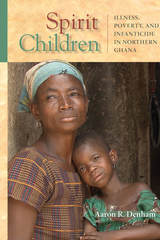 Spirit Children: Illness, Poverty, and Infanticide in Northern Ghana
Aaron R. Denham
University of Wisconsin Press, 2019 In parts of West Africa, some babies and toddlers are considered spirit children—nonhumans sent from the forest to cause misfortune and destroy the family. These are usually deformed or ailing infants, the very young whose births coincide with tragic events, or children who display unusual abilities. In some of these cases, families seek a solution in infanticide. Many others do not.
Refusing to generalize or oversimplify, Aaron R. Denham offers an ethnographic study of the spirit child phenomenon in Northern Ghana that considers medical, economic, religious, and political realities. He examines both the motivations of the families and the structural factors that lead to infanticide, framing these within the context of global public health. At the same time, he turns the lens on Western societies and the misunderstandings that prevail in discourse about this controversial practice. Engaging the complexity of the context, local meanings, and moral worlds of those confronting a spirit child, Denham offers visceral accounts of families' life and death decisions.
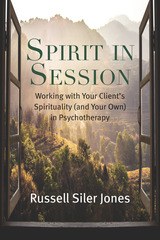 Spirit in Session: Working with Your Client’s Spirituality (and Your Own) in Psychotherapy
Russell Siler Jones
Templeton Press, 2019 Spirituality is an important part of many clients’ lives. It can be a resource for stabilization, healing, and growth. It can also be the cause of struggle and even harm. More and more therapists—those who consider themselves spiritual and those who do not—recognize the value of addressing spirituality in therapy and increasing their skill for engaging it ethically and effectively.
In this immensely practical book, Russell Siler Jones helps therapists feel more competent and confident about having spiritual conversations with clients. With a refreshing, down-to-earth style, he describes how to recognize the diverse explicit and implicit ways spirituality can appear in psychotherapy, how to assess the impact spirituality is having on clients, how to make interventions to maximize its healthy impact and lessen its unhealthy impact, and how therapists can draw upon their own spirituality in ethical and skillful ways. He includes extended case studies and clinical dialogue so readers can hear how spirituality becomes part of case conceptualization and what spiritual conversation actually sounds like in psychotherapy.
Jones has been a therapist for nearly 30 years and has trained therapists in the use of spirituality for over a decade. He writes about a complex topic with an elegant simplicity and provides how-to advice in a way that encourages therapists to find their own way to apply it.
Spirit in Session is a pragmatic guide that therapists will turn to again and again as they engage their clients in one of the most meaningful and consequential dimensions of human experience.
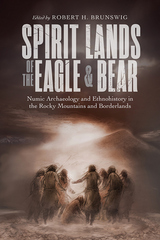 Spirit Lands of the Eagle and Bear: Numic Archaeology and Ethnohistory in the Rocky Mountains and Borderlands
Robert H. Brunswig
University Press of Colorado, 2020 Spirit Lands of the Eagle and Bear explores advances in the prehistory and early history of Numic hunter-gatherers in the Rocky Mountain West through the presentation and analysis of archaeological and historic research on the period from the earliest established presence in the Rockies and its borderlands more than a thousand years ago to the forced removal of Ute, Shoshone, and other tribes to reservations in the mid-nineteenth century.
New research into Numic archaeology, ethnohistory, and ethnography is significantly changing the understanding of migratory patterns, cultural interactions, chronology, and shared cultural-religious practices of regionally defined Numic branches and non-Numic populations of the American West. Contributors examine case studies of Ute and Shoshone material culture (ceramics, lithics, features and structures, trade and seasonal migration), chronology (dendrochronology, radiocarbon dating, thermoluminescence), and subsistence systems (hunting camps, game drives, faunal and botanical evidence of food sources). They also delineate different hunter-gatherer “ethnic groups” who co-occupied or interacted within one another’s territories through trade, raiding, or seasonal subsistence migrations, such as the Late Fremont/Ute and the Shoshone or the early Navajo/Ute and the Shoshone.
With a strong emphasis on diverse cases and new and original archaeological, ethnohistoric, and ethnographic lines of evidence, Spirit Lands of the Eagle and Bear interweaves anthropological theory and innovative applications of leading-edge scientific methodologies and technologies. The book presents a cross-section of field, laboratory, and ethnohistoric studies—including indigenous consultation—that explore past, recent, and ongoing developments in Numic cultural history and prehistory. It will be of interest to scholars of Southwestern archaeology, as well as private and government cultural resource specialists and museum staff.
Contributors:
Richard Adams, John Cater, Christine Chady, David Diggs, Rand Greubel, John Ives, Byron Loosle, Curtis Martin, Sally McBeth, Lindsay Montgomery, Bryon Schroeder, Matthew Stirn
The Spirit Level
David Barber
Northwestern University Press, 1995 Winner of the Terrence Des Pres Prize for Poetry
The Spirit Level is the first collection by an exciting new voice in American poetry. Representing the world as a place of feverish energies, David Barber creates a virtuoso tension between playful, sometimes flamboyant, diction, and the seriousness of his concerns. Balance and grace, but also wit and verbal energy, and a deft hand at shaping the poem, make Barber's first book a superb debut.
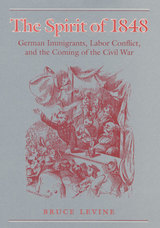 The Spirit of 1848: German Immigrants, Labor Conflict, and the Coming of the Civil War
Bruce Levine
University of Illinois Press, 1992 Immigrants and their children became the chief component of the U.S. working class during the nineteenth century. Bruce Levine examines the early years of this social transformation, focusing on German-born craft workers and the key roles they played in the economic and political life of the wage-earning population of antebellum America. Interweaving themes often treated separately---immigration, industrialization, class formation, and the political polarization over slavery---Levine sheds new light on the development of the working class, the nature and appeals of partisan politics, and the conflicts that led to sectional war.
The Spirit of 1848 offers much new information and insight concerning craftwork, the nature of the antebellum labor movement (including the great New York City tailors' strike of 1850), the meaning of nativism, the significance of the push for land reform, the diverse character of the free-soil movement, and the popular appeals of both the Democratic and Republican parties.
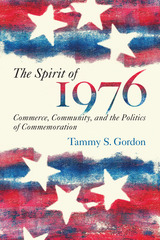 The Spirit of 1976: Commerce, Community, and the Politics of Commemoration
Tammy S. Gordon
University of Massachusetts Press, 2013 The most important national commemoration of the twentieth century, the 1976 bicentennial celebration gave rise to a broad-ranging debate over how the American Revolution should be remembered and represented. Federal planners seeking an uncritical glorification of the nation's founding came up against an array of constituencies with other interests and objectives. Inspired by the "new social history" that looked at the past "from the bottom up," Americans who had previously been disenfranchised by traditional national narratives—African Americans, women, American Indians, workers, young people—demanded a voice and representation in the planning. Local communities, similarly suspicious of federal direction, sought control over their own bicentennial events. Corporate representatives promoted an approach that championed the convergence of patriotism and private enterprise, while commercial interests applied the marketing techniques of an expanding consumerism to hawk every imaginable kind of patriotic souvenir to all of these groups.
The end result of these competing efforts, Tammy S. Gordon shows, was a national celebration that reflected some common themes, including a mistrust of federal power, an embrace of decentralized authority, and a new cultural emphasis on the importance of the self. The American Revolution Bicentennial can thus be seen as both a product of the social and political changes of the 1960s and a harbinger of things to come. After 1976, the postwar myth of a consensus view of American history came to an end, ensuring that future national commemorations would continue to be contested.
The Spirit of American Government
J. Allen Smith
Harvard University Press The first major American critique of the Founding Fathers and the Constitution, this book, originally published in 1907, became a powerful tract on behalf of the reform movement of the Progressives. Its vision of American history as a polar conflict between liberalism and conservatism flourished in American scholarship through much of the twentieth century, though modern reassessments of the influential work of Beard and Parrington, who further elaborated and extended J. Allen Smith's conclusions, have neglected his pioneering contribution. The editor's introduction and notes puts Smith's thesis into its historical context and evaluate the merits of his case in the light of modern scholarship and politics.
Spirit of Australia: The Crime Fiction of Arthur W. Upfield
Smith
University of Wisconsin Press, 1988 In the world of crime fiction, Arthur W. Upfield stands among the giants. His detective-inspector Napoleon Bonaparte, is one of the most memorable of all crime fighters. Upfield was an independent, fiercely self-assertive ex-Britisher, who loved Australia, especially the Outback. In many ways Upfield became Outback Australia—the “Spirit of Australia.”
Library of Congress subject headings for this publication:
Upfield, Arthur William, -- 1888-1964 -- Criticism and interpretation.
Detective and mystery stories, Australian -- History and criticism.
Bonaparte, Napoleon, Inspector (Fictitious character)
National characteristics, Australian, in literature.
Australia -- In literature.
Police in literature.
Crime in literature.
| |
